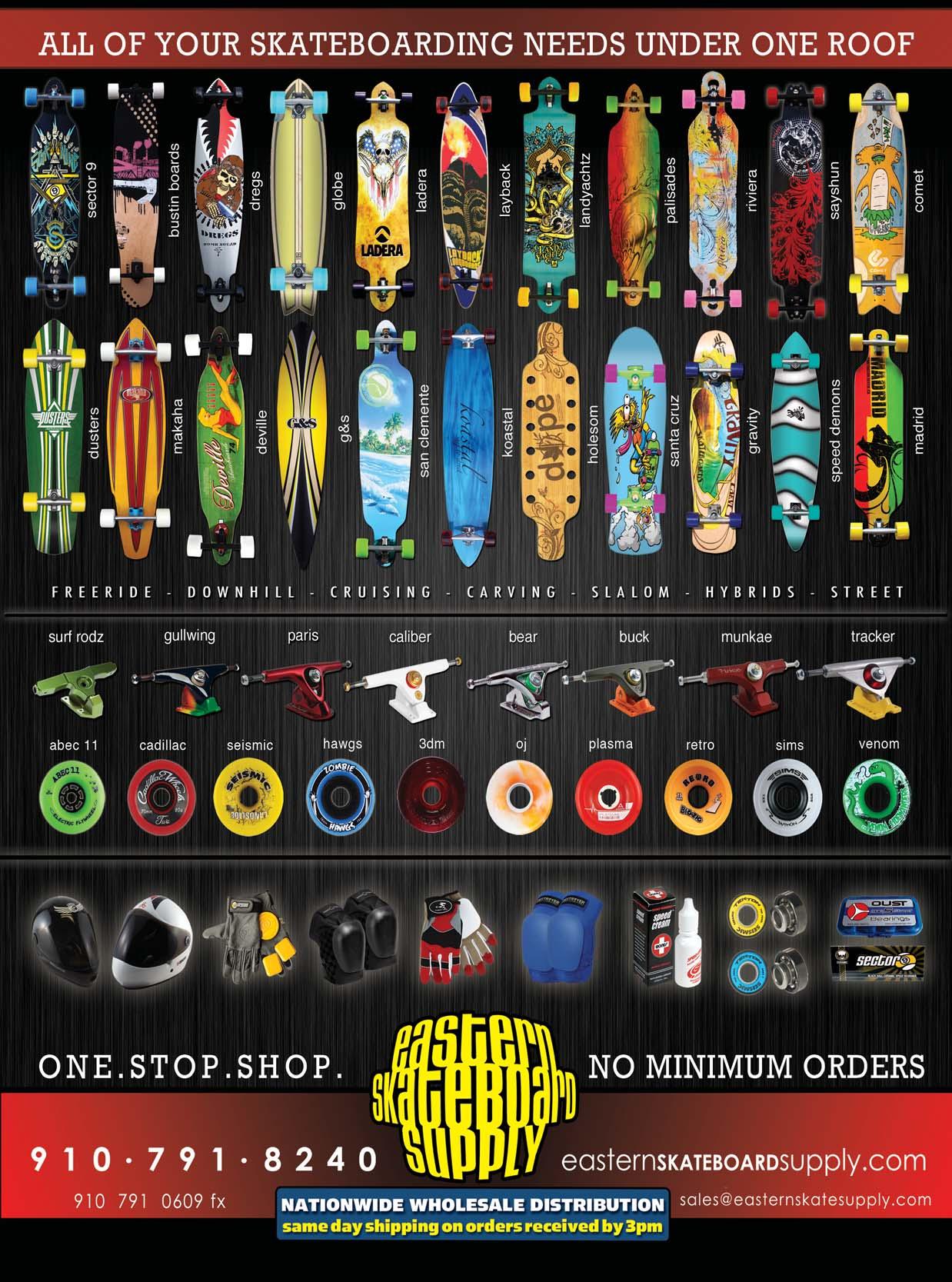
 Cheryl Johnson Maui & Sons Venice Beach, CA
PHOTO: RAY RAE GOLDMAN
Cheryl Johnson Maui & Sons Venice Beach, CA
PHOTO: RAY RAE GOLDMAN
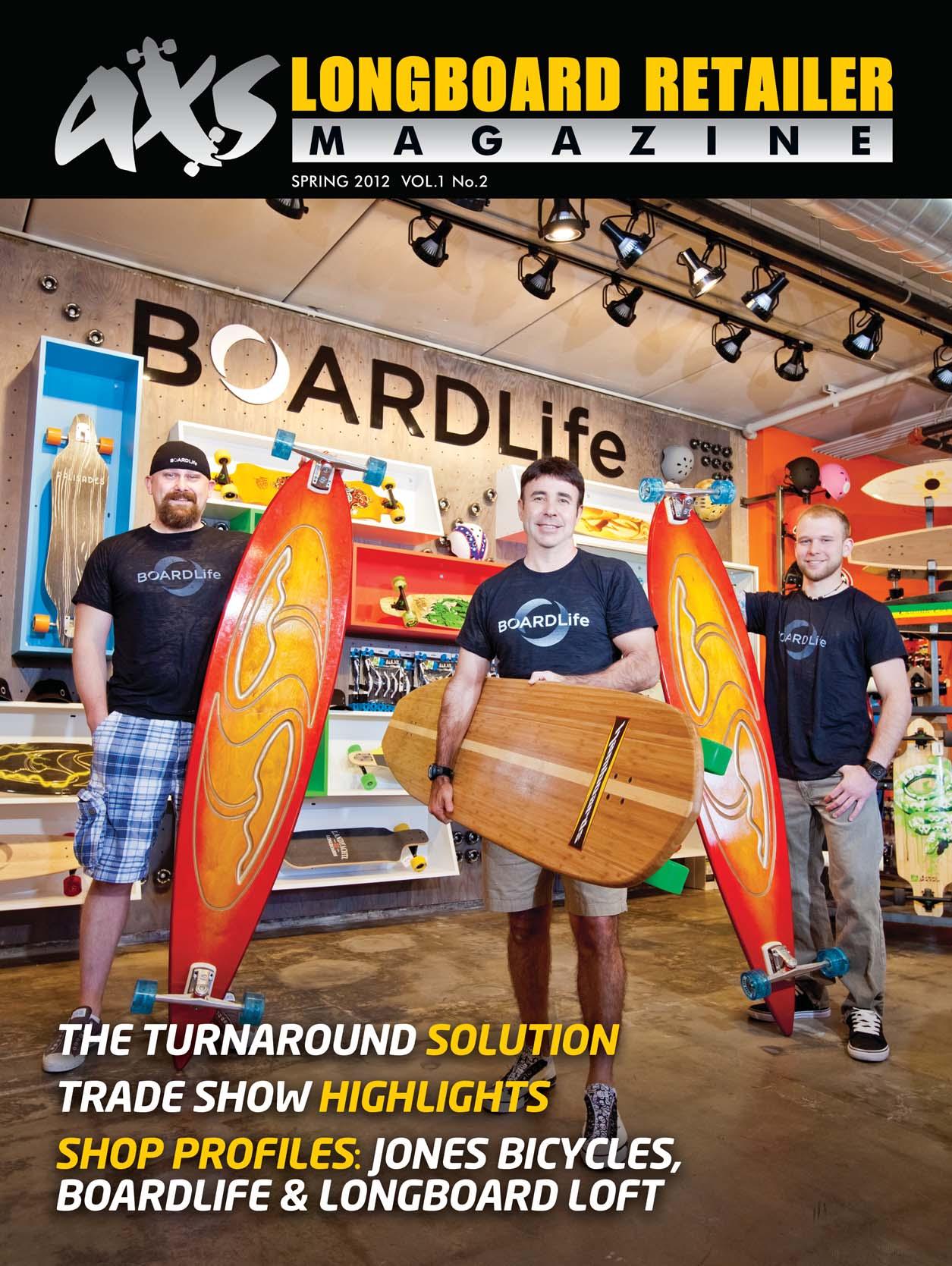
 Michael Pisarcik (left), John Klutznick and Nick Polidoro of BOARD Life, Denver, Colorado
PHOTO: MARK WOOLCOTT
Michael Pisarcik (left), John Klutznick and Nick Polidoro of BOARD Life, Denver, Colorado
PHOTO: MARK WOOLCOTT
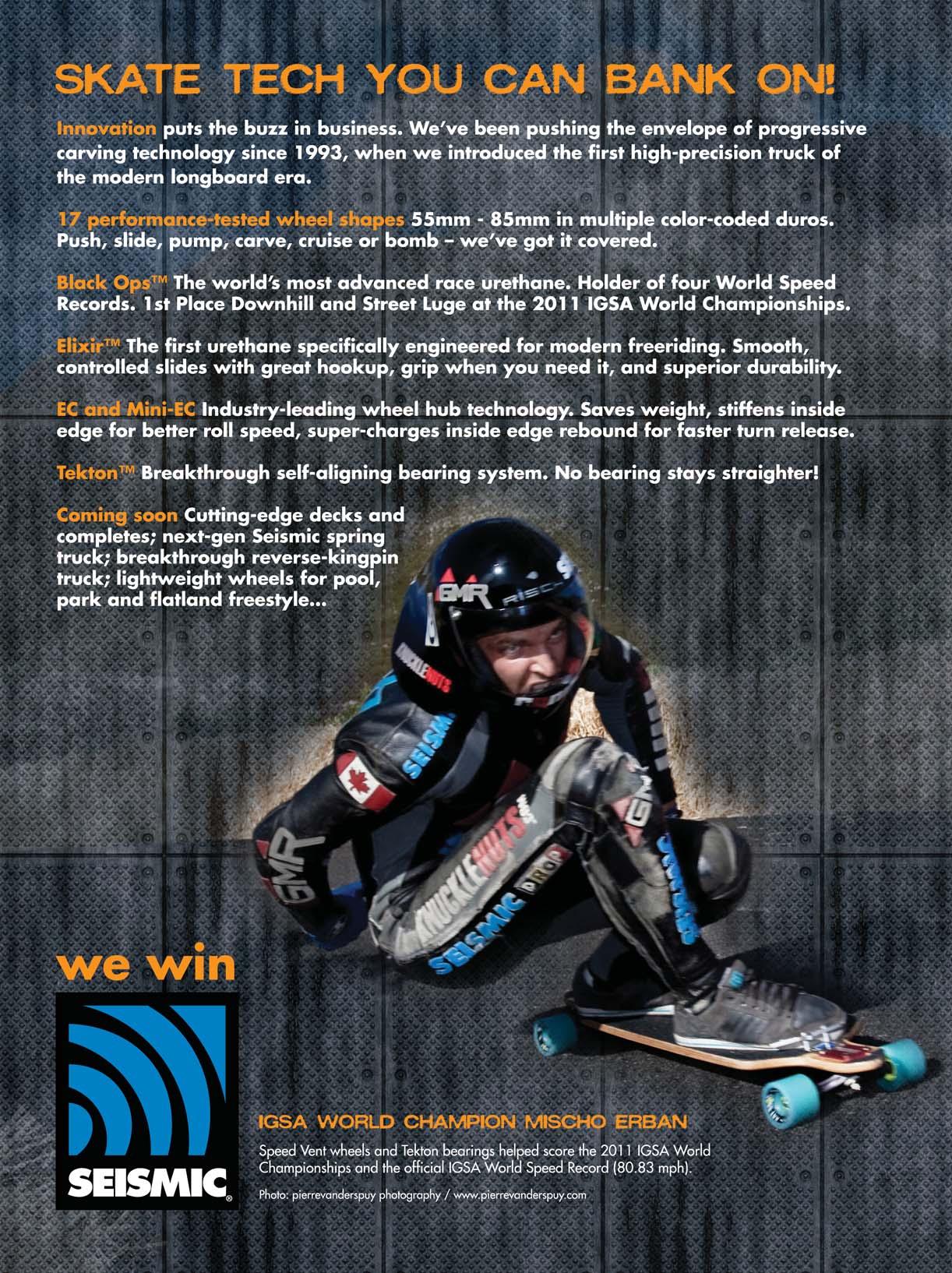

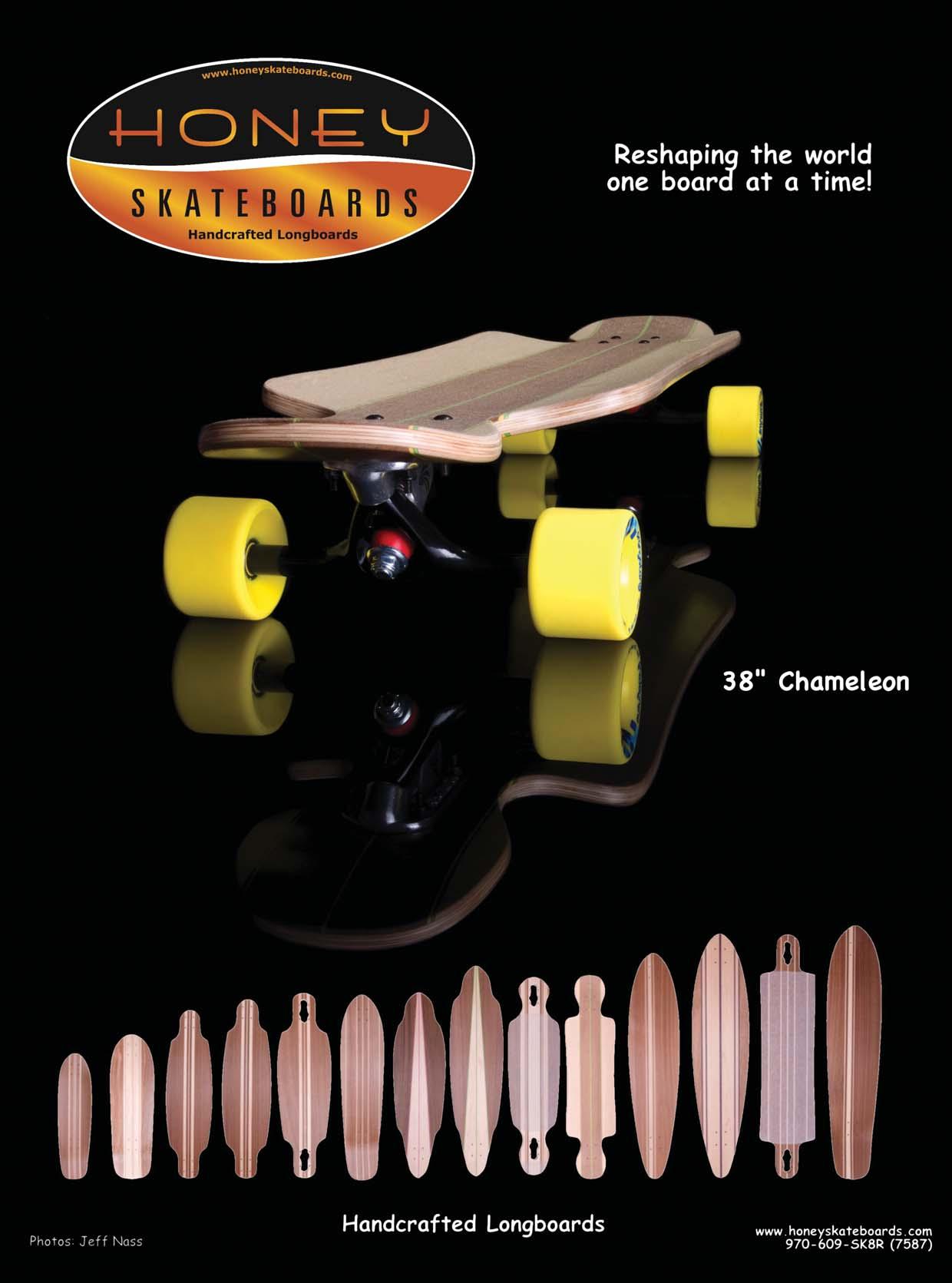





 Cheryl Johnson Maui & Sons Venice Beach, CA
PHOTO: RAY RAE GOLDMAN
Cheryl Johnson Maui & Sons Venice Beach, CA
PHOTO: RAY RAE GOLDMAN

 Michael Pisarcik (left), John Klutznick and Nick Polidoro of BOARD Life, Denver, Colorado
PHOTO: MARK WOOLCOTT
Michael Pisarcik (left), John Klutznick and Nick Polidoro of BOARD Life, Denver, Colorado
PHOTO: MARK WOOLCOTT







The first issue of this magazine was published just under six months ago. We are proud to tell you that the feedback has been excellent. We’ve heard of arguments in shops about who was going to keep the magazine to take home. We’ve heard directly from dealers at trade shows that they found the magazine an extremely valuable resource. We’ve even heard from longboard companies who said they felt AXS had struck the right tone.
While we are humbled by the reaction, we know there is much work to be done. So we’ve been busy. We hit four trade shows in six weeks. We talked with numerous dealers and industry executives to get their take on things. After this, we got down to the business of providing you with another issue that we know will give you insights and ideas to help your business succeed.
In this issue you’ll discover what’s happening at New York City’s Longboard Loft and Denver’s BOARDLife. We also profile Jones Bicycles, a shop that has been in business for more than 100 years. You’ll find out about one of the most intriguing machines we spotted at the SIA Show, a remarkable longboard simulator – perfect to drive traffic to your shop! We take a look at some unusual marketing from a soft-drink company and give you some insights into the world of plastic cruisers. We’ve also brought in some new contributors to share their ideas. From entrepreneurship to how to better market your store, we know you’llfind these articles highly worthwhile.
Although we’ve brought on some on new writers, we know that many of you are eager to hear from Mark Brasier, who discussed the snowboard industry in our inaugural issue. His insights are drawn from more than 25 years’ worth of experience.
While there are indeed many challenges in retail, there is no question that with the arrival of spring, longboarding is well positioned for a terrific season. Once again, we want to thank you for being a part of AXS Longboard Retailer Magazine. We welcome your feedback and wish you a successful start to the year!
Best wishes,
Michael Brooke Rick Tetz PublishersPublishers/Editors
Michael Brooke | Rick Tetz
Art Director
Mark Tzerelshtein | markintoshdesign.com
Copy Editor
Jonathan Harms
Contributing Editors
Bud Stratford | Mark Brasier
Marie Case | Ben Curtis | Pamela Clark
Address: 1136 Center Street, Suite 293 Thornhill, ONTARIO L4J 3M8, Canada Ph.: 905-738-0804
AXSGEAR.com
AXS Longboard Retailer Magazine is published as a joint venture between North of La Jolla Inc. and Axsgear.com.

Publisher’s permission is required before reproducing any part of this magazine. The views and opinions expressed in AXS Longboard Retailer Magazine are not necessarily those of the publishers.

Complimentary copies of this magazine are available to all longboard retailers in North America. Please email mbrooke@axslongboardretailer.com or rtetz@axslongboardretailer.com
Welcome To AXS.....................8

In the late fall of 2011, John Klutznick and Michael Pisarcik joined forces to create a unique concept in retailing longboards. Their shop is called BOARDLife and is based in a hip, up-andcoming part of Denver, Colorado. I had an opportunity to visit the store during the SIA show in January 2012. As you will soon discover, there are some very interesting things happening within this shop.

What made you decide to start up a longboard shop?

John Klutznick: Michael and I both come from a commercial business background: Michael from commercial lighting and I from commercial real estate. The shop was driven by pure passion for longboarding and the lifestyle that surrounds it. I have two sons (Casey, 8, and Jackson, 11) and it was an opportunity to educate them and work together to create and run a small business while having fun. Michael’s family experiences have inspired him to be diligent in making sure BOARDLife embraces everyone who wants to learn and enjoy longboarding and the BOARDLifestyle.
The vision was to create a BOARDLifestyle boutique and not a traditional skate shop. As for the timing, in a down economy everyone is looking for safe investments, and we chose to invest in our passion and ourselves.
There are some highly creative things happening in your shop. What has been the reaction to the “Deck It Out” program?
JK: Deck It Out (DIO) has been a great success. The shop was opened in late October, and we have built more than 90 DIO boards in just over two months. The DIO process allows for education, creativity, personalization and customization. We have had kids as young as 6 and adults in their late
50s building boards. Longboarding is a growing family activity, and many families have chosen to build boards at BOARDLife rather than purchasing completes. Families enjoy spending time together creating personalized boards, as it is a bonding experience, and each member of the family leaves with pride and ownership in the special board that was created.
Education is a big part of DIO as the customer (BOARDLifer) learns about all the components of the longboard during the build process. We also take advantage of the build time to teach maintenance and safety to each BOARDLifer. What could be better than choosing all your components, building, etching and gripping your board and then walking out with a true personalized ride in just over an hour!
Describe the process of custom grip and custom lasering.
JK: Two of the DIO steps are custom laser etching and custom gripping. The etching is done using a laser engraver, which burns names, favorite numbers, messages, pictures and your company logo into the top or bottom of the longboard deck. Etching has replaced stickers and offers a permanent way to personalize and customize
your deck. The custom grip works in two ways. The BOARDLifer can choose either custom laser-cut grip tape or can design their own grip using 10 different colors of skate sand and a lightweight sealer to adhere the sand to the deck.
You’re getting families coming in and creating their own boards. I’d like your comments on this.
JK: The BOARDLife shop was designed with families in mind. The shop caters to the young and young at heart with longboards (DIO and completes), street paddles, cruiser bikes, safety gear and snow-related products (sleds, snow scooters/skates and longboard skis). Longboarding has hit mainstream and in the process has become a family activity. The family that builds together rides together.
I’ve heard rumors of birthday parties? Is this actually happening?
JK: DIO is a great way to celebrate a birthday. Parents are always looking for new and unique ways to celebrate a child’s birthday. Typically, we get a birthday boy or girl with two to three friends all building together. We also encourage birthday attendees to bring their existing boards with them so we can tune them and do a safety check. After building, there is pizza and cake and then everyone goes to rip their personalized boards. In addition to birthdays, we have also hosted team-building events for local and national businesses.
What are some of the emerging new trends you see happening within the world of longboard retailing?

JK: Instead of looking at trends, we view areas of long-term growth. We see growth potential coming from several sectors: women, boys/girls ages 6 to12, the whole family and college students. The introduction of the street paddle has brought many new faces to the sport, and that segment should continue to grow as it adds a new dimension to skating. Customers are focusing on high-quality products, personalization and expert advice.
How do you decide what types of product to carry?
JK: Michael, Nick (store manager) and I carry products that we have personally tested and used. We need to be able to speak about products from experience and share that with the customer. We also like to hear from our customers and vendors regarding new products and products they favor.
We will bring in their suggestions and test them and decide if they meet the standards and product mix of the shop. We are always on the lookout for high-quality new and cool products.
Do you feel that longboarding has reached a peak?
JK: Longboarding is definitely on the rise. For example, we recently built a board with a sixth-grade student from a local school, and he and his mother shared that there is a longboard riding class at their school. The class has been part of the school curriculum for two years. The first year four kids participated in the class. The second year had 42 participants. Also, we have many BOARDLifers who are in their 30s, 40s and 50s who skated as kids and are looking to get back into the sport. Longboarding is definitely trending up.
Any final comments?
JK: We welcome the opportunity to talk to industry deck and component manufacturers, as we are always scouting new and innovative products. AXS
When you find yourself in Denver, be sure to check out the shop, which is located at 2000 W. 30th Avenue. boardlifeusa.com

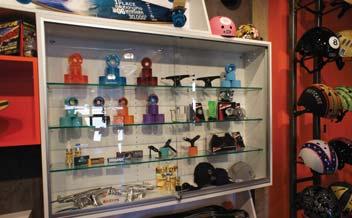


Mr. McGuire: I just want to say one word to you. Just one word.
Benjamin: Yes, sir.
Mr. McGuire: Are you listening?
Benjamin: Yes, I am.
Mr. McGuire: Plastics.
Benjamin: Exactly how do you mean?
It’s been more than 45 years since Benjamin Braddock, played by Dustin Hoffman in The Graduate, was told that his future lay in plastics. In the movie, young Benjamin is filled with anxiety about life. The question is, should core skateboard retailers be nervous too? What kind of impact will plastic skateboards have on the cruiser/longboard market? What kind of impact will they have on future generations of skateboarders?
There is no doubt that Australia’s plastic phenomenon, the Penny, has taken the skate world by storm. They arrived in the USA in the summer of 2011. The product is now everywhere and the fan base keeps growing. On one end you have hipsters, who seem to dig the retro look, and on the other side you have young kids who just want to have fun with a skateboard.
Upon first seeing a Penny, my initial reaction was “Wow, I had a plastic board three and a half decades ago! Why would I or anyone else want to go backwards?” It is a curious thing – retro is cool – but for many skaters there’s something kind of odd here. Isn’t this a bit like Apple introducing a typewriter? Despite my trepidation, there is no question that plastic skateboards have been embraced my many consumers.
When Penny hit the newswire in the U.S., the media release referred to the product as “crack cocaine for kids and teenagers” because of the demand for product and the extreme reactions when the product is sold out. Still, you can’t argue with the extraordinary sales. “A number of retailers have thanked us because they’ve kept the lights on,” remarks Nick Timms of Penny USA.
“We are now catapulted into the No. 2 brand
spot in the shop,” he adds. “Retailers are making full margins.”
You get a sense that even the folks at Penny were initially surprised by how the market first reacted to the Penny. Timms says the company is humbled by the success.
“We all remembered how much fun we had riding our first skateboard – which, for many of

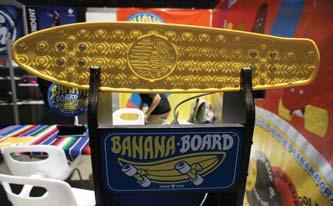
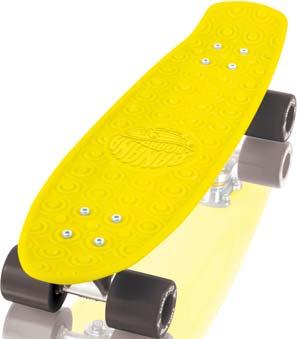
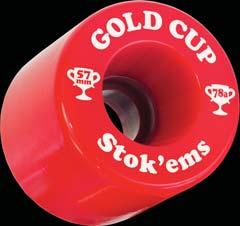

us, was a plastic skateboard. That being said, it seemed like a great idea to bring the fun and the nostalgia back through Penny,” he says. “We knew that older riders would want to revisit feelings of their early days of skating, and that it would eventually translate and trickle down to the younger ones as to how and why we all got into skateboarding to begin with. To say that this worked is an understatement.”
Timms says it was somewhat surprising to witness firsthand how quickly the resurgence has grown in popularity. Of particular interest is that the Penny has appeal to both males and females. “As a result, more and more female riders are skating now,” he says. “This was very exciting for us because, if it were up to us, everyone should be riding a skateboard, and we were now one step closer to accomplishing that goal.”
Predictably, the competition has started to
heat up in this market. Stereo introduced a Vinyl Series cruiser complete with a free set of sunglasses. Globe introduced its Bantam plastic cruiser in December 2011. Judging by the amount of folks carrying the Stereo product at the Agenda show in January, there was huge interest for it. In fact, Stereo ran out of show samples. Also spotted at the Agenda show was the Banana Board from Gold Cup. This line was created by Lance Mountain and is distributed by NHS. I spent a quite a bit of time with Jeremy Fox, the manager of Flip, discussing the product. What was fascinating was the attention to detail. “The top has a non-slip traction [surface], the trucks are a replica of the old ACS 430s and the wheels have a ’70s look that is reminiscent of the Stoker,” he said.
In terms of improvements in the product, there is no question that things have been updated since plastic skateboards first hit in the ’70s. These enhancements improve the functionality … to a point. This leads to a big question: Are these plastic skateboards a fantastic gateway




product? The answer seems to be “perhaps.” They are certainly closer to actual skateboards than Razor scooters and RipStiks! This is probably one of the most valuable things the plastic skateboards can offer – they are a remarkable way for people to learn about soft wheels and turning.
Over at Globe, John Sherwood says he’s really happy with the initial success of the Bantam. “This will get a lot of first-timers onto boards,” he says. “We hope they decide they want to try other product, whether that’s a longboard, a short, surfy shape or board.” Sherwood remarked that he’s also seeing people who already have long or short cruisers buying the plastic skateboards because they are different, easy to put in a locker or backpack and just plain fun to cruise around on.

In terms of progression, Penny recently in-

troduced the Nickel – a slightly larger deck. Stereo is now selling packages of wheels. So what comes next? Well, the future of plastic skateboards is somewhat difficult to predict.

“There has been a lot of speculation that this category will begin taper off in a couple of years – that this is just a fad for the time being,” Timms says. He is hoping to debunk this theory. “We feel that as long as there are kids looking to get introduced into skateboarding, there will still exist a market for this newly renovated ‘fun’ category. And where there’s fun, Penny will be there.”
For a core skateboard retailer, that’s probably the best way to view this category: Enjoy the demand and simply sell the “fun” to a whole new market. Yes, you might even see some migration to longboards. We sense, however, that things will more than likely spiral quickly into the mass market. It’s not a huge leap to imagine that bigbox retailers will jump on plastic skateboards this year. If the demand is there, the market will respond accordingly and the price for plastic skateboards will fall dramatically. AXS

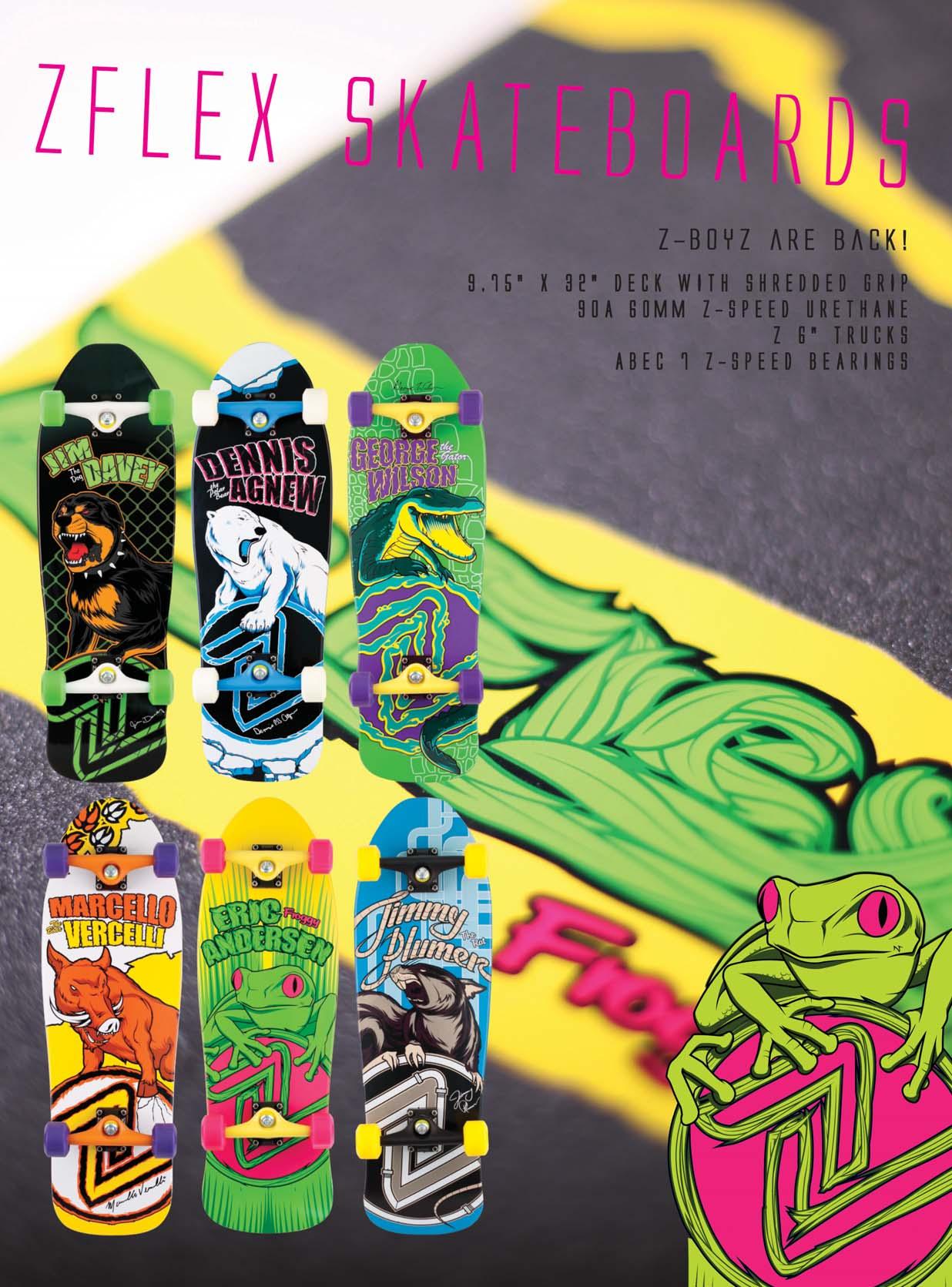
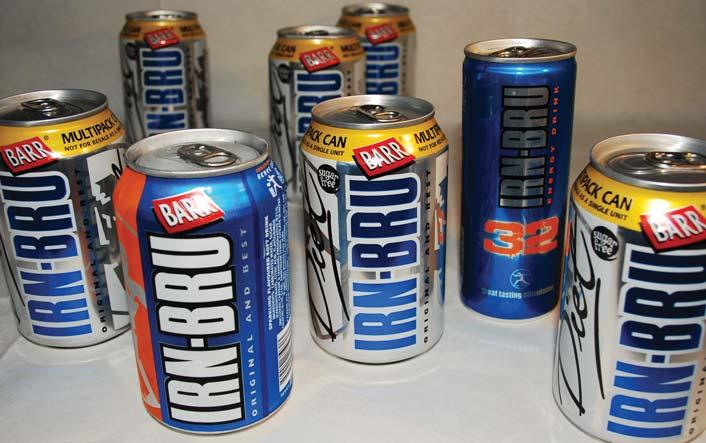

No matter how long you’ve been in business, if you’re an independent, it can be pretty difficult going up against the larger companies. The chain stores have massive economies of scale and the big corporations seem to have unlimited marketing budgets. What can a Scottish soft drink company teach smaller longboard retailers and companies about finding success while surrounded by giants? Quite a bit, actually!
When it comes to soft drinks, CocaCola and Pepsi dominate practically every market in the world. The only exception is Scotland. In this particular market, Irn-Bru is the drink of choice. Butchances are you’ve never heard of Irn-Bru. The truth is, however, that there is much to be learned from this remarkable brand and its successes. Not only has Irn-Bru managed to exist for 111 years, it continues to astonish and inspire to this day. But before we explain what this brand is doing, let’s examine its history.
The drink was first produced in 1901 under the name Strachan’s Brew. The name originated with the rebuilding of Glasgow Central Station in 1901. When workers from the William Beardmore and Company Steel Works in Glasgow were dying from the large amounts of beer they drank to quench their thirst from the heat of the steel works, an alternative was sought.A local soft drinks manufacturer, A.G. Barr, contacted the steel works and worked out a deal to provide the workers with an alternative drink. This unnamed drink later went on to be known as Iron Brew because of its connections to the steel (and iron) works. It was then changed to Irn-Bru.
Having grown up in Leeds, Great Britain (just a five-hour drive from Scotland), I can attest that the Scots have a decidedly different perspective on life. After researching this brand, it is clear to me that Irn-Bru has been able to capture the fiercely independent Scottish spirit. Irn-Bru has also tapped into the Scots’ unique and amusing take on life – calling itself “Scotland’s other national drink.”
But if ever there were a clear case of David versus Goliath, this is it. The marketing muscle of PepsiCo and Coca-Cola means that Irn-Bru has to be incredibly strategic and careful with its marketing budgets. From what I have been able
to discover, Irn-Bru does six key things that help it punch far above its weight when it comes to marketing. As shown by the examples that follow each point, some longboard companies and shops seem to be doing the same.
Irn-Bru doesn’t look like Pepsi, Coke or 7-Up. It’s orange, for crying out loud! It sure as heck doesn’t taste like regular cola, either. To stand out from all the “me-too” products and services out there, it’s crucial to get creative and develop something unique. But be warned: By making something unique, you are not going to capture the entire market. There are a large number of folks who don’t drink Irn-Bru. Some may even dislike it immensely. But precisely because it’s unique, many people do embrace it. Whatever you do, don’t be bland and middle-of-the-road. Life is too short!
REAL-WORLD
So Hip It Hurts, Toronto – Free shot of booze with purchase (seriously!)
Longboard Loft, NYC – Wall of wheels
Hamboards – 6½-foot longboards
Carver – Unique trucks
Abec 11 – Ginormous 107 mm wheels
Like Coca Cola, the recipe for Irn-Bru is a closely guarded secret. But this alone is not enough to intrigue people. In some countries, Irn-Bru has small traces of iron it. Even the marketing campaign played this up: “Made in Scotland from girders.” Mystery gets people talking. Inquiring about what outrageous thing you’re going to do next is terrific word-of-mouth. Like much of what Irn-Bru does, building mystery into their
brand doesn’t cost a lot; it just requires a huge amount of creativity. I am not suggesting you hire David Copperfield to visit your shop. What I am suggesting is that you take the time to come up with some ways to build a bit of intrigue into your shop or brand. A little bit of mystery can go a long way.
REAL-WORLD EXAMPLE:
Soda Factory – One thread on Silverfish has now hit close to 3 million views – and they still don’t have a website.
You get the sense that Irn-Bru doesn’t take itself too seriously. Its advertising is cheeky and/or outrageous depending on your worldview. Some of the more notorious ads that weren’t shown to the public are presented on its website. They are truly hilarious/warped, again, depending on your worldview. In fact, the company seems to thrive on being outrageous. Getting people to take notice of your business with outlandish and bizarre humor can be a difficult proposition. I maintain it can be done as long as you triangulate it with a sense of honesty and sincerity. In one press release, Irn-Bru implored Brazilians and Scots to hook up and make babies to create the next generation of Scottish soccer superstars. When a brand can tap into a community’s zeal and marry it with an outrageous idea, it can be a recipe for huge attention and will help build the brand’s identity. Can you create something like this? Of course you can!
REAL-WORLD EXAMPLES:
Switchback Longboards –
“100% skateboarding, 10% of the time”
Dregs – Parody ad campaign
Paris Trucks –
“We Make These. You’re Welcome.”
This is an incredibly complex thing to do, but in the case of Irn-Bru, it works brilliantly. Since the brand has more than a century of history, there are a lot of terrific memories associated with it. Those who drank Irn-Bru when they were young still have a soft spot for it. However, nostalgia generally doesn’t translate into substantial sales. Plus, your best customers acquire different tastes and/or expire. Irn-Bru shrewdly recognized this
and tapped into the youth market. They visited schools and talked with students. What they discovered was that “no two described Irn-Bru in the same way.” The best description they found was “likeable maverick” – a self-confident, unconventional and independent character who wouldn’t think or behave in quite the same way as other people. As a character type, this description of the brand has a great deal in common with the way their teenage audience itself likes to be perceived.
Santa Cruz – Its longboard line is filled with retro art from Jim Phillips
The Irn-Bru marketing department has an extraordinary ability to tap into what people believe about themselves. This is then reflected in the purchases they make. The meaning of Irn-Bru is clear to those who drink it. There is almost a coding that goes into the messages. This comes out clearly in a television commercial that goes by the name “If” (which is a parody of the famous poem of the same name by Rudyard Kipling):
If you can bounce in six-inch heels all night and still walk home in your bare feet,
If you can keep two passions burning bright and see if there’s still some romance and defeat,
If you can hit a foreign beach without a tan or brave the howling sleet in just a shirt,
If you know you’re easily a better man when side by side with suits in just a skirt,
If you can party in the summer rain with kamikaze midgies in the mud, Or grit your teeth and put up with the pain of seeing in the new year in the scud,
If you can wait and wait for 1p change then proudly give the lot to charity
And know for certain it’s not strange to call yer lunch dinner and yer dinner tea,
If you can handle folk to call you Jock then you’ll have really earned your Irn-Bru, You’ll thank your mum for keeping you in stock and what is more
You’ll feel phenomenal too.
The visuals combined with the music on this advert make it extremely moving. Hard to believe you could get this emotional over a soft drink, but it’s true. Irn-Bru truly is a master at creating a powerful connection.
REAL-WORLD EXAMPLES:
Landyachtz – Highly creative Eh Team videos that are episodic in nature
Organgatang – As much thought put into the music as the video
Original – YouTube champions with more than 90 million views
Irn-Bru Infuses Community with an Enormous Sense of Pride
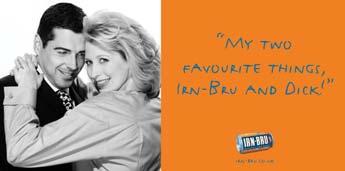
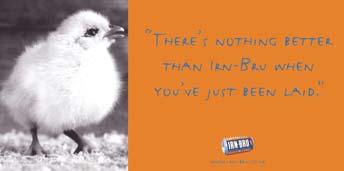
Irn-Bru is heavily connected to the Scottish Football League, sponsoring events and athletes. This is something that many brands do. What sets Irn-Bru apart is that they tap into something a little deeper. Everyone wants to feel a part of something. We join Facebook pages, follow people on Twitter and talk about products and services with friends. But what really resonates with people on a much deeper level is mixing a sense of sincere pride with belonging. In 2009, 10,000 people joined in to participate in the world’s largest can-can in Glasgow. Of course, there was plenty of Irn-Bru served and a tremendous number of folks in orange Irn-Bru kilts. In watching the videos, you get the sense that not only was it fun, it was a great way to infuse pride and a sense of community. Loyal customers are not just happy to support your efforts, they are truly proud to be seen supporting you. Irn-Bru is a badge of honor – a statement of who you are and the community that you represent. The huge swell of pride that surrounds Irn-Bru has taken years to cultivate. The brand is careful to always live up to the level to which it’s been elevated.
Never Summer – Factory built/made in USA Sector 9 – Original tagline was “Ride with Pride” Sk8Kings – Numerous freestyle competitions/events
Woody’s Halfpipe, Georgia –Orchestrated a cleanup of a local ravine Hopkin Skate Shop, Australia – Their post-expansion opening day video is controlled chaos
I’ll admit that Irn-Bru does have a fairly large marketing budget compared to a local skate shop or a small longboard company. But what I am hoping you’ll take away from this article is that by blending a little bit of creativity and chutzpah, you can develop a similarly loyal base of customers. We’d love to hear your stories about your own implementation of “Irn-Bru”-like marketing. AXS

Like many of you, I’ve attended dozens of trade shows. Sure, they all feature lots of cool products, but it’s rare to encounter something that absolutely blows your mind. But that’s what happened to me in January when I attended the SnowSports Industries of America (SIA) show in Denver. Tucked away in a back corner (remember, it always pays to visit the edges of a show) was an extraordinary machine: a ski and snowboard simulator made by a company called SkyTec Interactive and sold in the U.S. by SkyTechSport.
Unlike simulators you might have experienced in the past, this one is truly cutting-edge. The technology used in the SkyTec Interactive Simulators reproduces the real physical forces, thus allowing skiers, snowboarders and, yes, even longboarders to experience the same Gforce effects they would feel in well-carved turns on a real slope. As you glide from side to side on the device’s platform, the image on the screen reacts with your movement. The result is a startling experience.
It took a team of European engineers to develop this system, and all that brain power has created something revolutionary. The learning curve is extraordinarily quick, and the unit is a great deal of fun to use. But behind this machine there is a great deal of physics and genius at work.
The advanced drive-control system, coupled with the powerful virtual-reality software, allows for a wide range of experiences – from beginner to expert.When you edge on the simulator it is directly linked with physical forces that are created mechanically via a complex system of sensors installed into the device. Engines controlled by the computer create centripetal forces and are simulated using a mechanism that creates a lateral movement. As a result, during lateral movement the rider can feel the same G-force effects as at the moment of steering in a turn on a real slope.
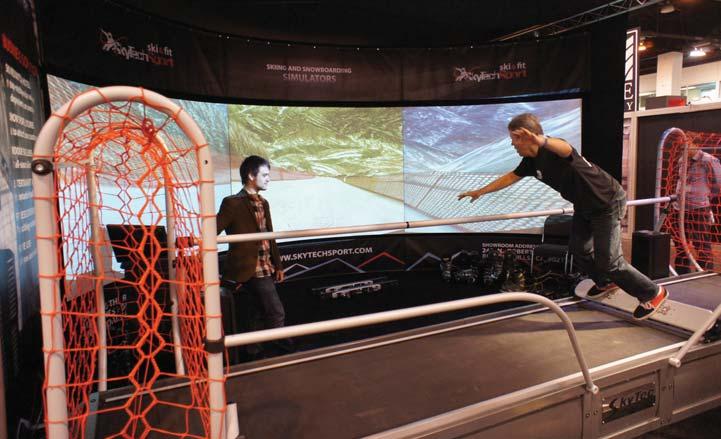
Translation: This machine is a freaking blast!
I tried the machine first with snowboard boots and bindings. It was surreal. I really felt like I was zooming down a hill. About the only thing missing was the wind blowing in my face. (A $25 fan would have fixed that issue!)
The next day, I asked Alex Golunov, one of the project managers of SkyTechSport, to let me try the unit without bindings and boots. At first he was a little unsure, as no one had done so before. But he jumped on, calibrated the unit and within minutes, he was soaring. I followed him,
and after three minutes found my heart rate racing up to 180 bpm. It was unlike anything I’d ever experienced. The unit’s sharp turns and deep carves combined with its visual stimulation to provide me with an overwhelming sensation of pure bliss. While nothing will replace the actual act of longboarding, this device is a very close second. It’s THAT good!
As you can imagine, the SkyTechSport machine garnered a tremendous amount of buzz at the show. Over the course of four days, people stood in awe of the device’s potential. I personally brought seven people over to see the unit, and every one of them was amazed.
A number of ski and snowboard athletes are already using it for training. However, this device also has enormous potential for retailers looking for a remarkable way to drive traffic.
The images on the video screen were of mountains and, of course, snow, but Alex said that changing the terrain to accommodate longboarders wouldn’t be too difficult. So look for asphalt runs in the very near future.
Now that you’re sufficiently intrigued about this device, let’s get into the nitty-gritty of costs and potential revenue streams. SkyTechSport currently sells three devices: small (10’), medium (18’) and large (23’), but they can also make customized sizes. The 10’ base unit starts at $20,000 and includes the track and video screen. While there are some retailers with fairly large shops, most folks will be drawn to this size unit. It’s big enough to attract attention but small enough that it won’t monopolize all the space in your shop.
In terms of return on investment, there are five key ways this unit would pay for itself very quickly.
It’s a great way for people to experience longboarding/snowboarding/skiing — this brings NEW customers to your shop.
It allows for someone to test out how a boot would feel — instead of just walking around the shop, the customer is actually trying the boots out “in the field.”
It’s such a unique device that your shop becomes a destination — bringing in new customers and attracting a huge amount of attention.
You could charge for use of the machine –local snowboard, ski or longboard teams could rent out the unit at certain hours. You might even consider birthday parties!
Working with various companies, you could have banners on the unit (and logos on the screen). I am quite sure companies like Red Bull would be very interested in having their name attached to this unit.
A number of units are already out there in use. Most are in Europe, but with such an incredible response at the SIA show, I am quite confident there will be a growing base in North America. And SkyTechSport has a demo facility in Beverly Hills, California, where you can try out the equipment for yourself.
If you’re a shop looking for innovative ways to compete and offer customers a truly immersive retail experience, this simulator is well worth a look. For more information on this absolutely stunning piece of technology, visit skytechsport.com or call 323-423-6427. AXS


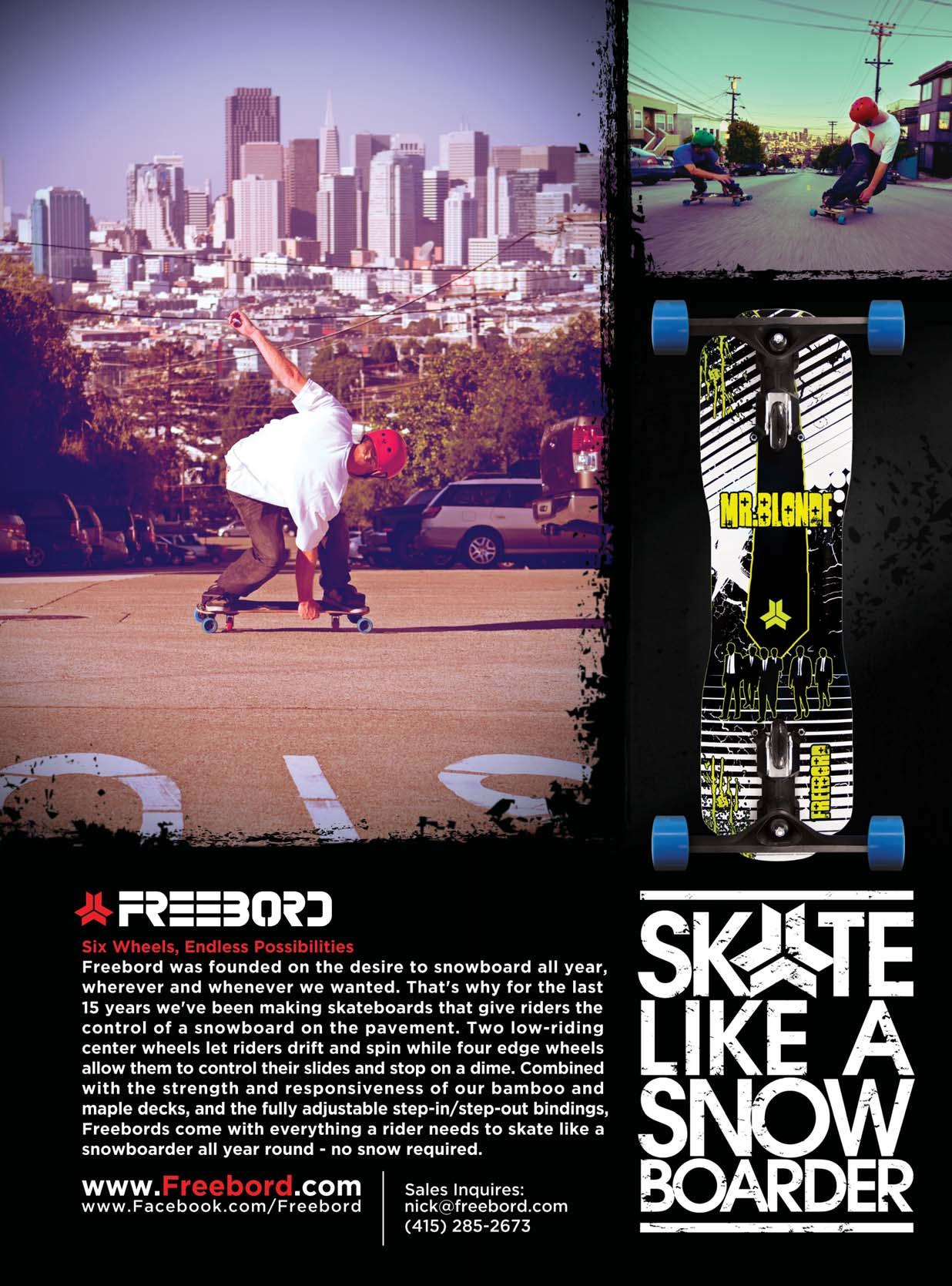

marks the 102nd year in business for Jones Bicycles in Long Beach, California. It’s quite a milestone, and one that many retailers would love to achieve. But how is it possible? I asked store manager Ulises Torres the secret to the shop’s longevity. “It’s location,” he said. “You have to find the right spot. And as long as you know how to run the business nice and tight – then you can have longevity.”
I sense, however, that it’s more than location and merely running a tight business. It requires a number of different talents and an ability to handle whatever life throws at you. In researching the history of Jones Bicycles, it became apparent to me that the shop has literally lived through history. It’s survived the Great Depression, the 1933 Long Beach earthquake, two World Wars, the Los Angeles riots of the early 1990s, a total-loss fire and five major economic recessions.
There’s much to be learned from Jones Bicycles. The shop’s roots run deep in Long Beach. John and Lisa Genshock are now the fourth generation of owners of the establishment founded way back in 1910 by Frank Samuel Jones.

F.S. “Bicycle” Jones first began selling bicycles and wheeled toys in Long Beach at 6th St. and Long Beach Blvd. (then called American Avenue). In the 1930s, the store moved to 16th St. and Long Beach Blvd. Jones was a hero to hundreds of boys and girls who delivered the Long Beach newspaper, the Press-Telegram, during the Great Depression because they could buy a bike from him for as little as 50 cents down and 25 cents every payday. (This was long before credit cards even existed.) Through his astute business acumen, Jones managed to guide his business through World War I, the Great Depression and World War II. Frank Samuel Jones passed away in 1961 at the age of 77.
In 1959, Ben Lawee purchased Jones Bicycles, growing it from a single store into a multi-store chain in six years. He established the store located at 1628 Long Beach Blvd. Disillusioned by the lack of brand options available to retailers, he left retailing and began importing Bianchi and Legnano bikes as well as becoming the national distributor for Raleigh and Motobecane – later founding and operating Lawee Inc. He created the Univega brand of bicycles in the 1970s, then

sold the brand to Raleigh in 1996 and retired from the bicycle industry. He too was known for his business acumen, and for his ability to spec a bicycle that appealed to the consumer while costing less for the retailer. Lawee passed away in November 2002, leaving behind a remarkable legacy in the bicycle industry.
In 1965, Robert Olson purchased the Long Beach Blvd. location from Lawee, also growing from a single store to a multi-store chain. He added skiing equipment to his inventory to expand his business. But Olson did not escape without hardship, either. He had to contend with major economic recessions in the 1980s and early 1990s, and during the Los Angeles riots in April 1992, looters stole more than 700 bicycles from the Long Beach Blvd. store. After 82 years of retail presence on the Boulevard, the store closed in July 1992, unable to recover from the event. The iconic “Jones man” sign, battered and rusty, still looms over the building today.
Olson continued to operate two remaining stores on Katella Avenue in Los Alamitos and on 2nd Street in Long Beach, eventually selling both stores in the early ’90s and retiring from the bicycle industry. The remaining Jones Bicycles location at 5327 E 2nd Street continued to thrive, moving from a smaller location across the street to 5332 E. 2nd St., former location of Pat’s Ski and Sport – another Long Beach landmark. Olson sold the business to two of his employees, John and Lisa Genshock, in 1994. The husband-andwife team was eager to grow and expand the business, despite the global recession occurring at the time.

At the time, their main competitor had secured the top bicycle brands, leaving the Genshocks no choice but to purchase less-popular brands. They developed a strong affiliation with former owner Lawee and his value-oriented Univega brand. They also aligned with Giant Bicycles, which eventually became a desirable brand worldwide and the Genshocks’ main bicycle line.
John Genshock possesses a unique talent for creating a retail environment that is comfortable, friendly and amusing. Early on, he understood that in order to effectively compete, he had to expand inventory and to take advantage of the store’s unique mezzanine layout to create a unique shopping experience. He was one of the first retailers on 2nd St. to use neon lighting for a modern look and is the first bicycle retailer to install a four-story bicycle display rack. John scours antique stores for unique curiosities to add interest to the shopping experience, including eclectic bicycles, unique art, a drone missile, a custom-painted Porsche, a crane game and rotary game from the Long Beach Pike and fun odds and ends tucked in virtually every corner. He also knows how to purchase wisely and offer the very best deals to his customers; the best example is Jones Bicycles’ “Buy One Get One Free”
sale, which customers eagerly await each year.
Lisa’s talent is managing the administrative and financial part of the business. She is a self-taught bookkeeper and has built one of the best reputations in the industry for her company’s creditworthiness. Steadfast during hardship, she managed the financial recovery of the 2nd St. store after a devastating fire in 1997 that forced the Genshocks out of business for six months, while concurrently opening a third store in Lakewood, California. She also developed Jones Bicycles’ charitable giving policy and donates to school fundraisers within the Long Beach Unified School District. Giving back to the community that supports them is very important to both John and Lisa.
As mentioned above, location has been a crucial factor for the shop. The back of the shop is about 100 yards from the ocean and a long, meandering boardwalk – fantastic for skateboarding. The town of Long Beach is both bike- and longboardfriendly, which store manager Torres says makes people feel at ease when they purchase either type of product. “And some folks buy both,” he says.
In 1995, the Genshocks opened a second store in San Marino, California, and in 1998, they began a successful eBay business, selling hard-tofind vintage bicycle parts and shipping them all over the world. The Lakewood store venture, however, was unsuccessful and closed in 1999. John and Lisa say they deviated from their merchandising model of creating a store with character, and they learned a valuable lesson from it. The customers said it didn’t reflect Jones Bicycles’ unique identity and fun feeling.
Torres says the 2nd St. shop caters to the intermediate buyer. “They are our bread and butter – from about $300 to $750 per bike,” he says. “We
sell very little expert [equipment] because here in California, there are a lot of little high-end boutique shops.” He also says the high end only represents a small fraction of customers for a boutique shop. “You might get only two or three clients per week looking for a $6500 bike.”

In 2001, the Genshocks expanded the 2nd St. store to include skateboards. Now they boast one of the best selections of longboards in the Greater Los Angeles area and a display of vintage decks that would be the envy of any collector.

As they have done with bikes, Jones Bicycles has invested in providing a huge inventory of longboarding gear. The place is literally filled to the gills! The shop is deep into Landyachtz, Sector 9 and Dregs, Torres says. “You want a set of $350 Bear trucks? I have six pairs in every color!” he exclaims.
“Over the past six months, we’ve seen a huge demand for longboards,” he continues. “It ranges in age from 8 to adults. Our street-deck demand has really diminished.
“We get father-son combinations coming in to buy – we get father-daughter too. And we are keeping an eye on long distance/marathon skateboarding.”
The team’s ability to react to trends quickly has allowed them to weather the difficult current economic climate. They attribute their success to their teamwork, solid business relationships and willingness to try new ideas.
When you think about what has happened over the past century, it’s amazing to think about what retailing will be like in 2112. If things work out, the great-grandchildren of today’s customers will probably be shopping at Jones Bicycles. AXS
Often “our industry” likes to think of itself exclusively in terms of manufacturers, brands, distributors and retailers. You know: “Industry Dudes.” Likewise, “industry events” are routinely designed solely by, and geared exclusively toward, those very same manufacturers, brands, distributors and retailers that employ the “industry dudes” –who ultimately become the event’s exclusive attendees. Looking at it from “outside the box,” it all looks very insider, exclusionary and even sort of incestuous. So when I first got the news that the ASR (Action Sports Retailer) trade show had folded a few years back, I wasn’t really all that surprised. In light of the changing nature of our industry, it was completely inevitable. The reason is simple: These industry endeavors hopelessly and completely overlook the most vital element of “our industry”: the everyday skateboarder.
“Our industry” all too often forgets that it is built on the heads and shoulders of the everyday skaters, who support it with their hard-earned dollars, day in and day out. Without the perpetual support of these skaters worldwide, the industry itself would quickly and quietly cease to exist. That makes “everyday skaters,” in my book, the true industry leaders, as well as the most vital (and the most numerous) component of our industry itself.
For the last six months or so, I’ve been helping to organize a new type of trade-show paradigm that we’re calling “The Board Meeting.” This show is designed to reflect a simple truth: For far too long now, the everyday skater has effectively been excluded from major industry get-togethers. Which in retrospect seems completely back-asswards. Instead of designing new tradeshow paradigms that exclude the everyday skater, maybe what we really need to be doing to spark “global excitement,” “engagement with our pastime” – or whatever nifty, neat-o buzzwords IASC is blowing out their butts this week – is to build a much more inclusive industry event that allows skaters inside and allows them to voice their wishes, needs, wants and desires in an open,
honest and uncensored setting. Maybe what we as an industry really need is a quick little reminder of whom exactly we’re all working for. Maybe instead of designing a trade-show paradigm that panders to “industry insiders,” we need to build one that answers to the entire community of skateboarders worldwide. The Board Meeting is a first small step in that direction.
The venue was a total no-brainer. Our trade show is being held at a skatepark. Which is where industry events really ought to be: in places that represent, relate to and identify with skateboarding. Why do we as an industry insist on having these things at some big, posh, expensive, sterile, stale oceanfront convention center? Where’s the “skateboarding” in a bloated, boring beachfront banquet hall? If you try to actually skate in, around or through one of these damned things, you’re risking getting detained by some mall-cop security goon (like Erik Basil did at one of the last ASRs I ever attended) or getting a fat ticket from the finest fuzz patrolling the block. C’mon, guys! Skateboarding deserves better than this! And “skateboard industry events” deserve to have skateboarding going on in, through and around them, all the time. As such, our host for the first-ever Board Meeting is Bob at Ollie’s Skatepark in Florence, Kentucky –a small exclave just south of Cincinnati, Ohio. Bob strikes me as a very kind, sincere, smart and patient man with lots of experience in managing chaos and destruction. And good for us – because we’re pretty sure we’re gonna need it.
The flyers for The Board Meeting pretty much say it all: “Trade show. Demo. Party. Session. Fun. Whatever ... Be there!” The Board Meeting is several “skateboard events” all rolled into one. It’s loose, casual, diverse and geared toward having a good time, all the time, while also giving skaters a place to learn all about the latest and greatest our industry has to offer. Exposure, plus education plus entertainment is always a winning combination. At least it is for me.
Most “trade shows” define success (or failure) by how many (paying) brands and retailers show
up. This has been the benchmark that the industry has used now for eons. The Board Meeting is a different beast altogether and plays by completely different rules. Our job isn’t to merely create a more efficient, exciting and profitable brand/retailer sales interface. Rather, our job is to get skaters stoked on skateboarding, stoked on our industry’s efforts to serve their needs, and to create an atmosphere where they can learn about their favorite brands, emerging technologies, new products and the people who (usually) work behind the scenes to make these things happen. As such, we’ll define success by how stoked the skaters are on the overall show experience. Then we’ll use the feedback of everyday skaters to reassess our performance, see how much we sucked, and re-tool our efforts so that we can (hopefully) suck a lot less at next year’s show.
Yeah, you read that right: “Next Year’s Show.” This is in no way intended to be a one-off experiment. Rather, it’s the beginning of a movement toward a truly inclusive skateboard industry. Anybody with some space to spare, a few (or a ton) of skatepark obstacles and a little bit of testicular mojo can put one of these together. And really, they should. To be honest, “Board Meetings” should be happening all over the country, at different venues, using different formats, on an ongoing basis, year in and year out. Every scene deserves recognition and investment, just like every skater deserves access to, and face-time with, the industry that exists to serve them. This industry is, after all, a dollar democracy – not a moolah monarchy, and definitely not a douchebag dictatorship.
Events, diversions and sideshows will be the forte of this year’s “Board Meeting” festivities. Prowood Fingerboards is building an extensive fingerboard-skatepark display, as well as sponsoring a few games of SKATE. AJ Kohn (of One Skateboards), along with freestyle phenom Greyson Asthon, will be giving flatland/freestyle demonstrations and tutorials throughout the day. This probably represents the first “freestyle”

and Ohio chapters will be out in force, having a few cold ones, lurking hard, skating harder and representing the growing “skate-club” scene. And in the afternoon, the exhibit area will be closing down for a couple of hours, so company owners and sales representatives can participate in the “Old Man Industry-Guy Mini-Ramp Hell Session,” skate around with the kids and maybe even let them try out some of those brand new products for themselves. In the evening, we’re planning on having some bands play, while the event organizers and attendees splinter off into smaller groups for private backyard/warehouse ramp sessions, or maybe even a few evening excursions to some of the area’s finer concrete skatepark wonderlands. Hopefully, somebody will volunteer to help clean up. And even the theme rooms at the Wildwood Inn look ripe for their own brand of shenanigans and hijinks.

These days, skaters are buying more and more of their products online. And they’re buying based on how well a product performs (according to peer reviews), and how stoked they are on particular brands – including what those brands stand for, how relatable they are to their customers and how accountable and responsive they are to the needs of our community. Unlike most contemporary “trade shows,” The Board Meeting doesn’t even try to run away from these trends. Rather, we’ve designed a trade-show format that meets this new retail reality head-on. By letting skaters see, touch, try, experience and ask questions about brand new products right at the start of the spring buying/skating season, we’re giving them the chance to make even better and moreinformed buying decisions. Furthermore, we’re giving them the rare opportunity to talk directly to the experts – brand managers, product designers and sales representatives – face to face and in the flesh. It’s ultimately a very human and extremely personal experience. But ironically, it’s an experience that we believe will actually drive Internet sales forward and up to the next level. Given that, I’d say it’s very important that tradi-
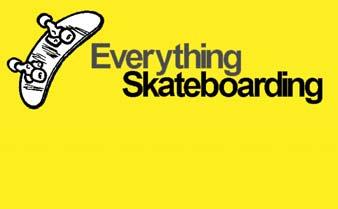
tional retailers make it out for this show – just so they can see what they’re competing with, and maybe even begin devising ways of effectively engaging this brave new world.
So what are the risks? Well, for the organizers, there really aren’t many. The date of the show (Saturday, April14, 2012) was timed to coincide with a traditionally slow time of year at Ollie’s. The venue was chosen based on its ease of accessibility and its centralized location within the Midwest. The admittance fee for exhibitors and attendees is a mere $18 a head for a full day of anarchic adventures, and the cost for table and chair rentals (for exhibitors) was set early on at a mere $40 a set. As I mentioned earlier, a significant-toimpressive retailer turnout is really a bonus, but certainly not any sort of stand-alone requirement for justifying the existence of this show. And already kids (and brands) are coming from all over the Midwest to be a part of the party. So I already sort of consider the whole experiment to be a fairly significant success. At least it’s viable, affordable, sustainable and relatively easy to toss together within a short time frame with just a few volunteers on hand, a few brands on board and virtually no budget whatsoever.
I think the biggest risks are being assumed by the brands (and the retailers) that aren’t planning on showing up for this sort of shindig. That really says something. In my world, the first thing it says is that “Our brand doesn’t really care about the everyday skater (a.k.a. ‘our customer’), let alone care all that much about supporting skateboarding in the Midwest.” Considering the ridiculously inexpensive costs of attending the show, there’s really not a lot of justification for any brand (or shop) worth its salt not to be there. Interestingly, it’s the small, local, independent companies that seem to “get this” far more intuitively than the larger, West Coast-based megabrands do. Why this is the case, I’m not entirely sure. But I think it might have something to do with the fact that smaller companies are typically run by actual skateboarders, whereas their big-brother counterparts are typically run by bean counters and money managers.
One of the funniest things I’ve experienced as one of the organizers of this huge mess is the sizeable number of “fence-sitters” I’ve encountered in my weekly rounds of calls and emails. In this industry, the fun fact of the matter is that nobody seems to want to commit to doing anything until somebody else has committed to doing it first. My girlfriend actually joked that it reminded her of a bunch of 15-year-old middle-schoolers: “Like, OMG! I totally don’t wanna go to the party unless Becky’s going! But I definitely don’t wanna go if

Brenda’s going! She’s so gross! Ewww!!!” Now, I never woulda thought I’d ever be referring to our “industry leaders” as a bunch of middle-school tweenies. But after putting this deal together, honestly, it’s kinda hard not to.
Likewise, the funniest question I heard (and I heard it a lot) was, “Hey! Am I invited?” We made it pretty clear right from the get-go that everybody – and by that we meant, quite literally, everybody – was invited to this thing. Still, it sort of threw dudes for a loop – as though having a truly all-inclusive skateboard gathering somehow just isn’t possible, or doesn’t quite make sense. Hey, it’s not my job to play by the rest of the world’s rules. I’m a skater, man. I make my own f—-in’ rules. And if I want everybody there, well, dammit, everybody’s just gonna have to be invited. Maybe this is a symptom of skaters just being so used to being shut out that the idea of actually being invited in actually seems kinda weird. Which I think is kind of a sad statement on the status quo, isn’t it?
The one lesson I took out of the whole experience is that we, as an industry, can pretty much do anything we wanna do. The world is, after all, ours for the taking. Heck: Even one solitary fat, old, bald guy (who doesn’t even skate very well) can still make a pretty significant contribution to building a much more responsive skateboard industry, if he simply resolves to do so. But still, the fact remains that if you want to get something done ... well, the first thing you’ve gotta do is do it. The risk isn’t in the doing, guys; the real risk is in the not doing. And right now, there’s a whole lotta industry heads not doing a whole lotta stuff. The time for waiting around for your buddies to move ahead and get it done is over. The time for doing it is always.
Lastly: Even though I’m one of the organizers, as well as a pretty prominent media guy ... I’ve decided that I won’t be covering this event. It’s just not my style to go, “Wooo! Look what my buddies and I did! How cool are we, huh?!” Screw that crap. The fact is that we’re really not that cool, and we damn well know it. Instead, I think it would be best if we let the kids – the skaters themselves – cover the event in the ways that they employ the best: their Facebook, Twitter and message-board accounts, and their Instagram photos, all over the Internet. Given the spirit and vibe behind this show, that’s exactly the way it should be. Let anarchy reign! Long live skateboarding! AXS
Q:Do you plan to put more of a focus on longboards this year? Why or why not?
Andi Leslie, Axess 33 – Cambridge, Ontario: Our main focus at our shop is longboards, so we’ll continue with that again this year. As far as bringing in new brands, we’re pretty happy with our current lineup, but we’re always open to checking out new companies and seeing how they’ll sell in town. Our shop is known for having a pretty amazing selection. Keeping at least 90 different completes in stock is our priority and our personal challenge.
Chris & Jackie Werth, Dubz Bikes and Boards – Oxford, Michigan: We are expanding our longboard inventory by more than 50%. This increase will put us at the top for independent skate shops in Michigan. We will be at the front of the pack stocking decks and components no other Michigan shops will have. Some of our inventory will include high-quality decks and components from the smaller companies that are looking to grow. We are a big supporter of CR Boardworks, who make their decks right here in Michigan. We want to see the small guys grow!
Chris Bunch, Alpine Ski Shop – Sterling, Virginia: Yes, there will be more of a focus on specialty brands, and lots more wheel choices. With the growing longboard population in our area, we will be carrying all sorts of shapes and

sizes. We started by just carrying completes, but we now offer a variety of “build your own” longboards. Completes are still a large part of our business, but by offering both options it adds legitimacy to our longboard section.
Rob Vaillancourt, Gulf Coast Skate Shop –Dunedin, Florida: Yes! Yes! Yes! We are definitely planning on expanding our selection of longboard decks, trucks and wheels this year. With longboarding being the fastest-growing form of skateboarding, it only makes sense!
Dennis Nazari, Salty Peaks – Salt Lake City, Utah: Yes, because popsicle-shaped skates are declining fast.
Q:What are some of your plans for 2012? Are you doing anything different? Are you expanding? Are you hiring more staff?
Andi Leslie: For 2012, we are switching up how we do some things at the shop. This year we are giving back to our community and the awesome kids that are a part of it! We’ve started our donation program, which gets skaters bringing in old, usable gear that they don’t want anymore. We then gather up the gear, set it all up as a complete, and hook up some of the less fortunate kids in our town with their own skateboard. We realize not every kid can afford to have their own skate-

board so this is our little way of giving back.
Aside from that, we’ll be completely redecorating the shop and changing the colors and layout. After seeing the same layout for a couple of years, it seems like a perfect time for some change!
Chris & Jackie Werth: For 2012 we are going to continue the outstanding customer service we are known for. We go the extra mile for our customers and will continue to do so in 2012 and beyond. “A Dubz customer is a happy customer,” we like to say. We will be holding swap meets, longboarding clinics and group rides in 2012, along with sponsoring an assortment of skate-related events.
Chris Bunch: I am expanding the longboard section of the store in the summer. I thought I would stop at four brands, but it looks like six is going to be the new number of deck companies. (And that could grow to eight. Who knows?) No new staff as of yet, but that can always change in a minute’s notice.
Rob Vaillancourt: For 2012, Gulf Coast has quite a few things planned – some I can share and some will be saved for the privileged Facebook friends. Ha ha! This year we are working on expanding our sponsorship for our team. In the past we have given discounts, free shop swag and reimbursed entry fees if a sponsored rider won. This year we are sponsoring Cameron Frazier, who also rides for Rayne and Gullwing, for every
stop on the IGSA World Cup Series. We will pay all entry fees and for patch work on his racing leathers, and assist with product like pads and clothing over the 2012 season.
We will also be sending a few riders to the 2012 Maryhill Festival Of Speed and other local races and races abroad. We have some of the top “Grom” skaters in the country on our team: 12year-old Nick Wallace qualified first this year for King of the Groms 2012 in expert bowl and mini ramp and qualified third in expert street. And 13-year-old local bowl/vert ripper Miles McKinney has been ripping up the skies winning cash prizes in big-air contests. Street skaters for Gulf Coast Skate Shop include Cam Simon, director and filmer of the Florida street skating video The Florida Story, and local Jeff Santee, who also has a full part in The Florida Story and rides for BLVD. Skateboards, FKD Bearings, Silver Trucks and Gulf Coast. They are always poppin’ off fresh videos, and I am sure you will see some great fresh Florida street skating from them this year.
The plans are not totally slated, but Gulf Coast has been kicking around the idea of making its third move in six years. We are looking at downtown locations for more local business, to provide great skate spots that you can skate to from the shop for our customers who drive from long distances, and lots of local entertainment within skating distance from the new retail storefront. We also plan to focus on doing an online store closer toward the end of the year.
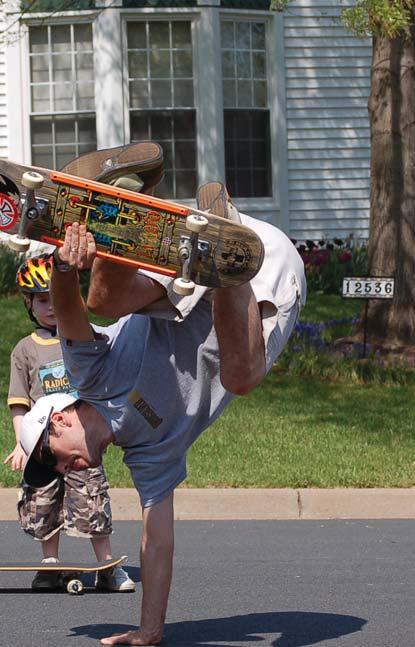
Andi Leslie: I’d love to tell them that I appreciate everything they are doing for our sport, riders, shops and more! As a racer, I have a massive appreciation for all the companies and people who make everything possible. There are many things about this industry that make me a happy lady, and constant product innovation is at the top of that list! Nothing makes me feel better than to be able to offer the newest products to the riders in town and even having it in stock before the release date! I love seeing customers’ reactions when they find the exact product they are looking for or something that totally fits their riding style. Obviously I love my job!
A few things about the way our industry works have been on my mind lately, and a few have caused a minor headache or two. I’ve seen a couple of companies out there with extremely unrealistic price breaks for ordering gear. Not all shops can afford to order in these large amounts to reap the benefits of the price breaks, and it’s unfortunate. It’s something the smaller shops are missing out on. Obviously the bigger the shop (or more locations a shop has), the more they can order in. Thus, said shop is able to price their products lower than others. The last few years I’ve noticed that it’s getting harder and harder to compete against some of the big online retailers and big-box shops, most of it just coming down to saving that extra buck. In
2012 I’d like to see the companies and distributors put a little more effort into making the smaller shops feel like they are a part of the big picture, so to speak. I’ve talked with a few other shop owners around the area, and I’m not the only one who’s noticed this. I think it would be pretty cool to see some more attention brought to the little guys.
Chris & Jackie Werth: We all need to work together to make the sport grow. This would include making sure to provide the independent stores the same opportunities they offer the big chains.
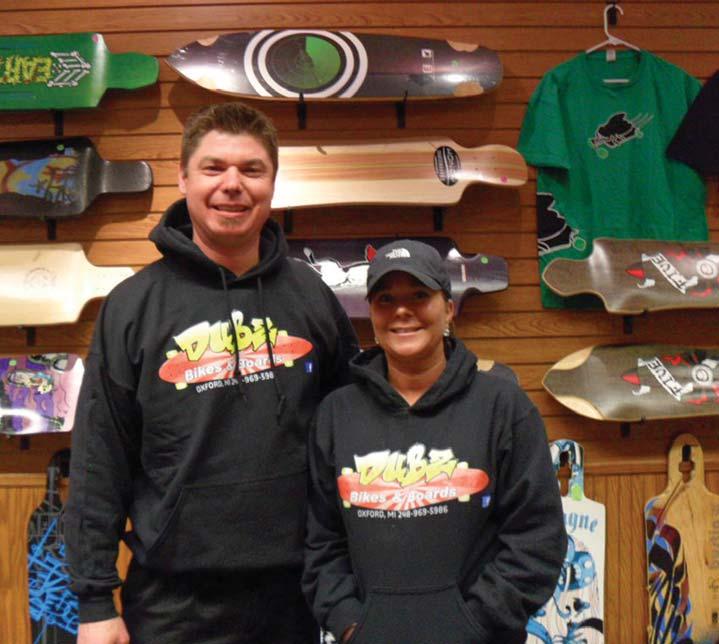
Chris Bunch: I would like to see commitment to price on the Internet. Make a hard stand against companies selling on price. I have seen Loaded do this, and I would love to see everyone commit to this model. Once you start selling on price instead of service, the brick-and-mortars can’t compete.
Dennis Nazari: Don’t make the same mistakes as the snowboard industry. Keep your supply tight, just under demand, and don’t sell to mass discounters. This will devalue and commoditize your brand. It’s always better to sell out at full pop and miss a few sales and keep demand high than it is to oversupply and always be discounting. It’s called a scarcity model, and longboard companies should live by it! Innovation and advancement are what’s driving this part of the industry and the companies need to step up and invest back to the riders. They need to sponsor or put on more contests and races and get creative. Do stuff that hasn’t been done yet. Keep it fresh!
Rob Vaillancourt: The young “core” skaters bring companies up and can stimulate and educate locals about new brands and products in different areas they skate. I think it’s paramount not to forget that young, talented skaters coming up are as important as finding the fastest or most stylish skaters in the world.
Quality is also an issue I have seen the quality slip from some of the largest manufacturers, especially in retail’s peak seasons. I think it’s important to stay on top of QC and stay innovative with designs. It’s 2012 and if you’re not evolving you will get left behind. Graphics are a touchy subject, and I am no art critic. All I know is what I hear in the shop selling these things over
the last 10 years. Let’s face it – adults are buying the higher-end boards these days, so a graphic geared toward both adults and young adults would be cool, and not everyone lives by or wants a picture of some beach or wave.
Andi Leslie: I love my shop, the customers, the companies and our sport. We’ve been open for seven years, and as much as I’d like to say that we’ll be open seven more, our future is unpredictable. Things are ever changing and so is our industry. There are a lot of days when I see a cus-
tomer find exactly what they want and leave the shop full of stoke with their new board. There are also days when every customer who walks in the shop tells me how they can find a better deal online or in a big-box store. You gotta learn to roll with the punches in this industry. I just wish it was easier for us smaller guys.
Chris & Jackie Werth: We are really excited to be a part of the great sport of longboarding. We are looking forward to a great year and many more to come. We want to be known as the place to go in Michigan to get great customer service and outstanding product! We are proud to be a brick-and-mortar shop and enjoy spending time with our customers face to face. We appreciate all of our customers.
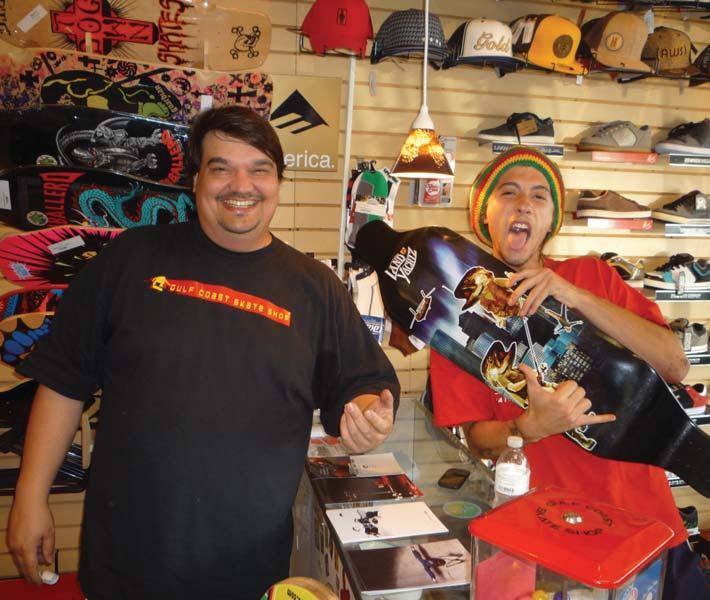
Rob Vaillancourt: Just getting out and skating is great. I started when I was around 7, and now I am 37, so just pushing is like stress relief and brings back a little bit of my childhood. Also, being involved in the industry is just plain awesome, and getting shipments in every week is like Christmas all year around; to be one of the first to see new products as they come out is pretty cool. But I would say the most rewarding thing is being one of the founders and co-owner of KLEVER Skateboards. Manufacturing is more work than anyone could ever imagine, but the rewards are worth every ache and pain.
Dennis Nazari: Deep snow in the winter and black powder in the summer.
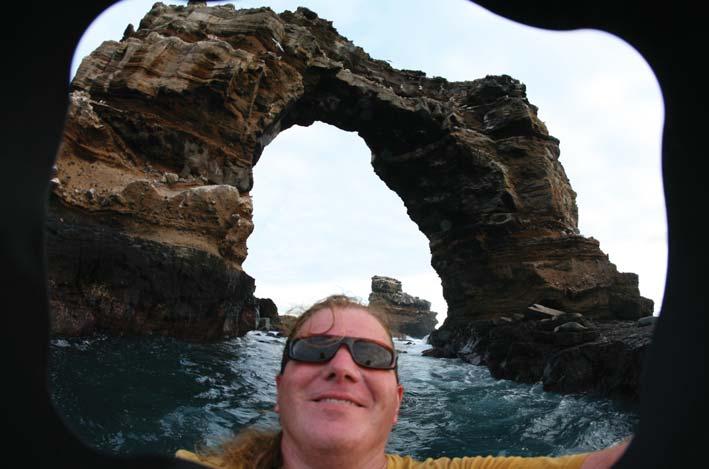
Rob Vaillancourt: I grew up skating in the ’80s, and skaters were a family. There was a sort of unspoken code; we were like family and we all got along with each other. I think as skateboarding’s popularity grew so large and so fast into the street skating scene in the early 2000s, the younger skaters were tossed into this machine, with no knowledge of skateboarding’s history or what it was really all about. We specialize more in longboarding now because it’s growing so fast and encompasses so many forms of skateboarding; it’s like the most “core” form of skateboarding these days. “Longboard skateboards” have had an image of surfers riding them at the beach or just for cruising around town, but that’s not the case anymore. Racing at high speeds and throwing your board into slides with no regard for your own personal safety are just a couple of forms of longboard skating that have drawn in more advanced and younger skaters. Here in Florida, racing is in our blood, so it’s only natural that even in our flatter coastal areas parking-garage racing and LDP (long-distance push) racing are becoming more and more popular. AXS

As you know, times are tough and shops are hurting. For many shop owners, rents are past due, vendors are awaiting payments, bills are piling up, things need upgrading, hiring help is not possible, the website has few visitors, and sales are dying. Maybe this is your situation. Maybe it’s worse. Or perhaps you’re one of the lucky few who are getting by. In either case, we need help, and we need it now.
There is now a new retail skate shop community that will help you easily turn your shop around. RatVision.com is the new hub of the skate industry where you will discover and learn how to effectively grow and thrive in your skateboard business.
RatVision.com will help you quickly turn your business around by assisting you with employee training, merchandising, website SEO, managing inventory, smarter purchasing, preparation for an event, tips on how to solve problems, social networking communications, creating marketing material … and making profits.
By becoming a member, you will have your own shop page that functions as a directory listing, profile and website in one place. Your shop page will show your store information, social media integration and feeds, Yelp reviews, brands you carry, photos, videos, your events and your free products page and shopping cart. Rat Vison.com will show you how to set up automated dropshipping, so you can sell far more products than you have in your shop’s inventory.
Also, you no longer have to limit your marketing to your followers on Facebook and Twitter. You will reach more customers than ever before by posting events at RatVision.com and have them seen by skaters all over the world. You will expand your customer base by getting more traffic to your store as skaters in neighboring cities see your shop and your events at RatVision.com.
Ever wonder how other shop owners are doing, what their margins are, the struggles they face, what solutions they have and the secrets they use to succeed? Now you can ask them directly. RatVision.com has created a worldwide arena for members to discuss a variety of topics, share their ideas and successes, post questions and more.
By joining the skateboard retail community, your voice will be heard and you will receive responses from fellow community members. You now have a place to communicate, gather and share ideas, voice concerns and worries, discover solutions, get expert advice, increase profitability and so much more.
No one likes coming to a forum only to discover the conversation took place four years ago and is no longer relevant. Popular websites like Answer.com allow people to post questions, but the answers to questions are unorganized and scattered throughout the site.
Rat Vision.com also provides interactive discussions with shop owners and industry experts who are currently talking online. Valuable information from the discussions is researched, double-checked for accuracy and then turned into articles for easy reading. Whenever you need quick answers, you can browse the Frequently Asked Questions by searching with keywords, or post a question for members to answer for you.
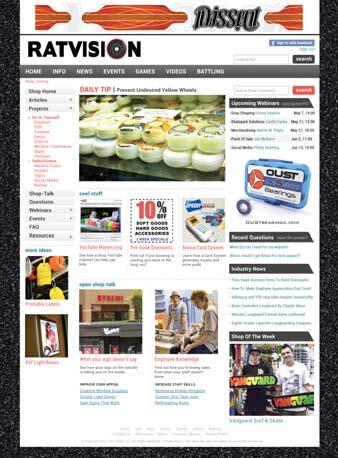
You have the option to be “Anonymous” in all fields of communication on RatVision.com. Many forums, blogs or comment fields encounter overinflated egos, bad attitudes and rude comments that can mar the experience for other readers and participants. As a business community providing insight, solutions and assistance,
RatVision.com will monitor the discussions to keep the environment fun, clean and on track.
RatVision.com membership also provides weekly advice, techniques and know-how from industry experts. By joining the weekly webinars, you will have a front-row seat with experts from both inside and outside the skateboard industry who will share tools that will assist with marketing, merchandising, computer software, skatepark development, business strategies, time management, do-it-yourself projects, event planning and especially with increasing profits.
No matter how successful a company is, there is always need for improvement and growth. Each day you will receive creative ideas, quick fixes, DIY tutorials, free downloads and/or instructional videos.
The Daily Tip section is an ongoing source of new ideas and hot tips on how to improve your shop experience. For example, The Daily Tip will show you how to keep street wheels from turning yellow over time. Wheels turn yellow from prolonged exposure to UV light. Nearly every skateboard shop displays wheels in a glass cabinet with fluorescent tube lights inside. These lights produce ultraviolet light, which gives white wheels an ugly tan. Replacing the fluorescent tubes with LED tube lights greatly reduces the chances of yellow wheels. Although the LED tubes are more expensive, they last about five times longer and use approximately half the wattage of fluorescent tubes. You can further protect the wheels by purchasing clear UV protection window film for the glass in your cabinet.
As a community member, you will receive tips and tricks like this each day. This one tip will save you from discounting undesirable yellow wheels and additionally saves money on your electric bill every month.
RatVision.com is your home for retail solutions and will assist you toward completing the tasks you may have been putting off for another day. These tasks can include creating mailers, flyers or posters for an upcoming sale, creating an eyepopping shop YouTube channel, improving vendor relationships, building fixtures or displays, merchandising, accounting, employee
training, social media marketing, advertising strategies, maintaining your website, making and receiving vendor orders and more.
Every shop deals with things that are lacking, not working, or causing problems for business. What turns things around is taking action. Rat Vision.com will help you take action now.
Rat Vision.com will help you improve your shop’s interior and exterior with better window displays, fixtures, racks, planning events, merchandising, computer software issues, developing a shop brand (not just a logo) and improving your staff’s knowledge and expertise.
When you are not on the sales floor, you are placing the reputation and success of your shop in the hands of your employees. This can be liberating – or devastating. The skill and care of your employees can make or break the success of your business. One knowledgeable and caring employee is far more valuable to your business than three employees who disappoint customers and only show up for a paycheck. The RatVi-
sion.com training videos will teach your employees how to create a pleasurable experience for your customers that will bring them back again and again. RatVision.com will turn your employees into skateboard experts and teach them how to sell products. It is vital for your staff to develop exceptional customer service and extensive product knowledge and connect on a personal level with your customers.
A practical example: Rat Vision recently conducted a survey of more than 20 small shops and several large chain stores. Each shop was asked what ABEC means. Not one employee could give a correct answer. Does your shop have the answers your potential customers are looking for?
Your shop employees should be able to tell customers that ABEC is an acronym for the Annular Bearing Engineering Committee, a bearing-industry committee that established standards for grading the tolerances in bearings. Shop employees should know that tolerances are the bearing dimensions, the allowable spaces between the balls and the inner and outer rings and that a rating is given depending on the required amount of space. Employees should be able to further explain that since ABEC only rates tolerances, ABEC ratings are no indication of how well a
bearing is manufactured or how well it functions.
When customers are impressed by your shop’s knowledge, they will come to you when they need help. When your customers have a pleasurable experience at your shop, they will keep coming back. No Internet business or large chain store can compete against the personal services of a fine-tuned sales staff at a real core skateboard shop.

To survive and profit, a sinking store must change the way it’s doing business. There is no reward in struggling merely to stay afloat. There are necessary steps to take right now for your shop to become more profitable. You must embrace the solutions and follow through with the necessary actions to turn your situation around. RatVision.com has the tools, techniques and resources to get you back on track.
It is imperative for the life of your business to make the changes and incorporate the solutions. As a member of RatVision.com, you are joining a unique skateboard retail community that will revive and accelerate your business and the “stoke” of skateboarding. Take action now and sign up today. AXS
It should come as no surprise that we love our hockey in Canada. There isn’t a kid in the country who hasn’t dreamt about lifting the Stanley Cup over his head. The game is ingrained into our DNA.
For years everyone went about playing the game the exact same way year after year – taking the same approach, implementing the same mindset, the same thinking, and inevitably producing the same results. It became a game of set plays, with the same stable of players, moving from one team to another, each circulating the same thinking into the game.

The game crept into a sea of conformity. The players carried out their roles in a pre-determined manner as outlined by management. It was robotic to a degree. There was the regular cast of characters on every team: the goal scorer, the pest, the enforcer, the goalie and a collection of middle-tier players to fill the roster. The management team in a sense.
And this was the very group responsible for cultivating the sport – this set-in-their-ways group liable for cultivating the next round of talent coming into the league and forging the future of our great game. These were the people driving the breeding ground, incubating the future, for all those starry-eyed kids playing road hockey on a Saturday afternoon dreaming of one day playing in the big league.
It was just a game played with a piece of wood, rubber and steel. Just a bunch of kids looking up to the leaders for the next great move, the next great celebration dance. They wanted more than to be told to skate hard, keep your stick on the ice and get to the net.
They wanted someone to put the puck somewhere it had never been.

Every once in a while someone different comes along: a rebel willing to test the given; a player willing to take risks and challenge the standards; a player ready to reinvent and redefine how the game is played.
Traditionalists didn’t believe the game needed a change. When Wayne Gretzky arrived in the National Hockey League in 1979, he had to make believers out of his staunchest opponents. The narrow-mindedness had become so entrenched into the very composition of the game.
Nobody had ever seen the game played the way Gretzky played. The traditionalists didn’t get it. He led by example and the forward-thinking teams around the league figured out how to build around him, draft off the success and momentum and equip their team with a plan that would address and allow them to compete in this revolutionized game. A league that was capturing the imagination of fans worldwide and encouraging individualism while never losing site of team play.
Gretzky was an individual. He put the puck places nobody has ever seen it go before. When he had the puck, he completely controlled the flow of the game. He would set up office behind the opponent’s net and orchestrate plays like a

point guard, or bring the puck into the opponent’s zone, circle back and pass it back to a trailing teammate. What on earth was he thinking?
Gretzky made getting an assist more respected than scoring a goal. He made it his responsibility to raise the level of play not only on his team, but in the entire league. He took the game to places never imagined before.
That sea of sameness disappeared once he arrived and the level of play was elevated, and it inspired and brought a re-emphasis on innovative and performance thinking.
Franchise players build franchises. They also build leagues. They are the rainmakers, the individuals who build and shape the players and teams around them. Gretzky practically built the entire league by attracting new fans from all over the world and pushing participation numbers through the roof. Every kid wanted to wear #99.
He and the Edmonton Oilers rethought the game, anticipating where the game needed to go
in order to raise the play of the league and, in effect, all the other teams.
With a view of the game like nobody before him, he brought about a style of play that has inspired others to constantly raise their level of play. This was all about one individual changing a team sport.
culture – a game so entrenched that those closest to it are oblivious and don’t see the very shaping that is taking place around them.
Don’t look back at how other action-sports leagues have played their games. Many of those leagues are defunct and searching for a new relevance. The inactive or “sit back and wait” attitude will hurt every time. You miss 100% of the shots you never take.
The “longboard league” has an opportunity to move away from traditional action-sports thinking. Nobody in the longboard league is looking to conform and simply fit in.
All of the elements are there. Traditional thinking has already set the league onto a course. You have to do something different to get a different result. And it has to be done now.
the beginning of the end. Is it really? Does it have to be? That thinking suggests we go to where the puck has already been. Think about who is putting the puck there.
Longboarding must step away from the infractions that took place in hockey: too many men on the ice, all those nasty hits from behind, the flagrant offsides and the occasional good old donnybrook!
What if instead the league helped nurture the underdeveloped teams and players, invested time and helped prop them up to a level that reflected positively on the league? The league needs to develop great teams and players. If the talent pool is too small to meet the market’s needs, weak players will step in and lower the game.
Longboarding is the game, the teams are the brands and the collective brands form the league. The game thrives on individualism but also needs collective efforts to be great.
This game is woven into the very fiber of the
How many times have we read the articles about the big boys who are going to reap all the benefits by taking it to the masses and commercializing the category? Same story over and over again. But these dealers are in the longboard league too. They service a consumer base that prefers to shop there. Is keeping the puck away from them in the collective best interest of the league?
We all seem to believe that if/when the sport becomes mainstream and commercial, it signals
It’s up. It’s down. Down again and then up. Hiring. No hiring. Consumer confidence and spending go up, followed by another downturn. We all need a lifetime supply of Dramamine to weather the daily ups and downs in this new world.
That’s the macro view; but if we come down to what we know here on the ground and take a look at our specialty retailers, there’s another picture.
In our recent Board-Trac/Board Retailers Association survey of retailers, they told us that things appear to be stabilizing – primarily in the specialty-store category. Margins were up for 45.4% of the respondents for the first half of 2011 compared to the same midyear time frame in 2010.

Only 24.1% said margins were down compared to the previous year at their mid-year review. This is positive news, because in 2010, 41.8% of
retailers said margins were down compared to the same time in 2009. (No question those two years – 2009 and 2010 – were bumpy at best.) And 30.6% told us there was no change in their margins mid-year 2011 compared to mid-year 2010.
Sales stayed the same for 37% for Q2 ’11 compared to Q1 ’11, and 41.7% said sales were up. It’s up.
These results are not totally consistent with recent headlines reflecting the broad market and big merchants like Macy’s, Saks and Target whose revenues are not always favored by Wall Street. At the same time, Costco, Limited and Nordstrom showed respectable revenue gains in 2011.
Single-digit increases are better than any digits on the negative side, and maybe we need to feel good in this new single-digit plus environment.
According to our survey, specialty stores are showing the
The leaders have to control the game. The leaders must set the standard and drive the league for the better good – even if many teams don’t and can’t see it. The leaders must take the puck and direct it where it needs to go. They are the only ones who truly know where the puck needs to be. And they must have their heads on a swivel so they have the full vision to see the opportunities from all directions. The strong will adapt their game to fit and will be part of the success.
Who wants the puck? AXS

important categories for business growth in 2011 are:
1. Footwear
2. Men’s Surf Apparel
3. Men’s Streetwear
Skateboard hardgoods is also an important category for growth this year. In the longboard category, Sector 9 continues to be the No. 1 brand, maintaining the position it’s had for several years. And responding retailers told us the “other” category is in the second position right behind Sector 9 and includes such brands as Bustin, Earthwing, Original and Subsonic.
By Marie Case Marie Case Managing Director Board-Trac, Inc.
Retailers also reported that they carry an average of 3.4 longboard brands, and our data tells us that the average amount spent on a longboard was $113.75. The data also tell us that active skateboarders spend about $10 more on each longboard purchased.
The results from the mid-year
retail survey include best-selling brands, increases by category, square footage devoted to hardgoods and softgoods, and marketing efforts during the year to increase sales. From our Board-Trac consumer and retail data we also published a special longboard report available under the skateboard reports page of our website – see “product reports/report options.” Visit our website at board-trac.com
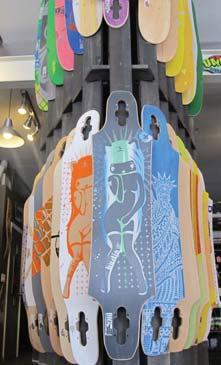
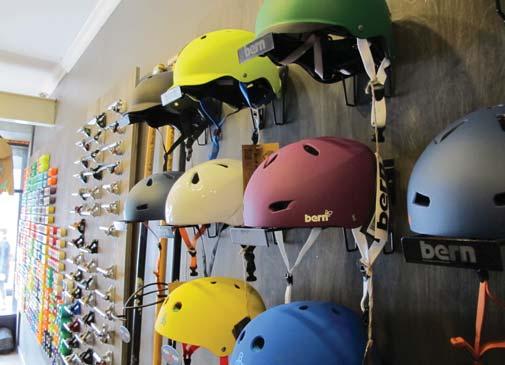
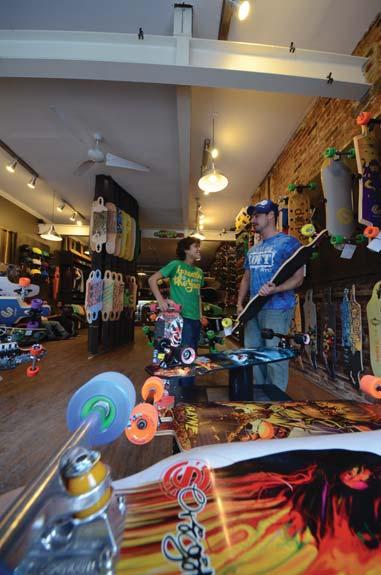
New York City’s Longboard Loft has made quite an impact in less than three years. The store combines strong customer service with brilliant merchandising displays. AXS had an opportunity to sit down with Rob Perry, who oversees operations for the store, and find out more about how it operates.
AXS: The Longboard Loft has gained quite a following. There is a true sense of community. What are some of the things that contribute to this?
Rob Perry: I think the biggest factor that contributes to the sense of community is that the Longboard Loft concept developed organically; originally the Brooklyn space that became the first Longboard Loft was just a Bustin Boards factory store. We weren’t actively trying to pursue the retail business but we continually had customers coming in and asking, “Do you have this Rayne deck or this Comet deck?” or “Where can I get precision trucks?” Eventually we realized that no store in New York was offering the broad range of
West Coast, so you had to wait a week. It just seemed absurd. So, we saw the demand was there, and it seemed like a great opportunity from two perspectives: to create a new business; and to serve the needs of the community, who are our friends, at the same time. In that sense, the store was almost created by and for the community. We hope as we grow it continues to reflect that.
As far as the store’s following, that goes well beyond the local community at this point. Through some combination of good timing and the allure of New York, the following of Longboard Loft has gone global. On my recent trip to Germany I was amazed by the number of people who have never even been to New York but are aware of Longboard Loft. We get a remarkable amount of international customers – European, South American, Asian –and for many of them, visiting the Loft is a highlight of their trip to the U.S. A few weeks ago we had a guy come into the shop from Europe and we asked him how he had found us; he told us he’d been traveling in Argentina and someone there told him that if he’s going to New York then he has to visit Longboard Loft! It’s truly incredible how quickly and how far the reputation has spread.
products that the exploding longboard community was demanding. We lived in New York City, a city with 7 million people, and the only place to buy specialty longboard products was online! And most of them shipped from the
You’ve created some truly remarkable merchandising displays such as the “wall of wheels.” Where does this creativity come from? What are some of the reactions to these unique displays? The creative force behind the Loft is Ryan Daughtridge (owner and president) but there is a definite collaborative spirit to it as well. Most of the furniture – display cases, wall installations, board racks – were custom built and either designed or co-designed by local skater and friend Theseus Williams, a former winner of the Broadway Bomb. There is a lot of creativity in the longboard community at large, I think, but definitely here in So there is never a shortage of ideas, and we’re constantly looking to make it better.
I think the concept behind these displays is to be visually impactful but also somewhat interactive. We want the store environment to be welcoming and fun. We intentionally limit the amount of product that is in cases or behind glass because we want customers to be able to squeeze the wheels to compare durometers or play with a truck to see how it turns. For me, traditional street skate shops can be somewhat intimidating; the products are often all in cases or the boards are behind a counter and you don’t want to ask questions. We want our customers to be inspired and to feel comfortable, even customers who know nothing about skateboards and are looking for their first board.
The wheel wall is definitely a signature display that grabs a ton of attention, even from passersby on the sidewalk. Almost nobody makes it out of the shop without spinning a few wheels. The Bustin Custom display, built around a support beam in the center of the store, is another unique installation—it features a large assortment of hand-printed one-of-a-kind Bustin boards, each one designed, printed, signed and numbered by Bustin’s team of in-house printmakers out in Brooklyn. The third unique display is our “Rat Rod” wall, which is opposite the wall of wheels, where we feature staff-designed custom setups with their preferred board, grip, truck, wheel, bearing and even bushing combination for the desired discipline.
Many retailers are concerned about online, but it appears you’ve been able to work well in both bricks and clicks.
At this point Longboard Loft is only a brickand-mortar store; we’re not doing any e-commerce. I think there are a variety of factors behind our success, but the biggest one is definitely community support; many of our regular customers bought their first board at Longboard Loft and met their skate friends there and even skate with the staff. So those people will come back, knowing they’ll get good service and can touch and feel the product and get good advice before investing money in it. I think we’ve also done a good job of creating a store that is unique and fun and has a sense of authenticity. People can sense that. Customers are continually blown away by the atmosphere of the shop; they love watching their board get assembled, trying out demo boards, comparing bushings and getting advice from experienced riders – you just can’t do those things online, or at least not in the same way. At the same time, being a specialty retailer in the nation’s largest shopping city with 7 million residents and a huge tourism business probably doesn’t hurt us any … but hey, that’s all part of the plan, right?
You now have two locations. What are the differences between the two shops? That’s pretty simple: Manhattan is the Longboard Loft and Brooklyn is a Bustin Boards factory store. Soon after we conceived the idea for the Longboard Loft, we realized that it needed an objectivity that couldn’t fully exist while operating out of what was the Bustin headquarters. Likewise, for Bustin we wanted a space where people could continue to experience the Bustin Brooklyn brand. At that point we moved the Longboard Loft into Manhattan’s Lower East Side and reverted the Brooklyn shop back to its roots, the Bustin Store. The Longboard Loft location definitely gets more traffic and is our main focus from a retail perspective. The gritty, artsy feel of the Lower East Side really fits with the brands we carry and, being just east of Soho, we get tons of foot traffic from locals and tourists. Our focus is on turning this into the best longboard specialty store on the East Coast.
The Bustin store is more of a brand-experience location. We’re planning an overhaul to that location, hoping to improve upon the experience in a way that makes it a destination. Being just a few miles’ skate away across the man-made, urban asphalt ski slope called the Williamsburg Bridge, it’s not difficult to go from one to the other, but their identities and purposes are very different. And since they are staffed and stocked independently of one another, in the eyes of the customer there is no real connection.
Simply put, if you visit the Brooklyn shop you can pop in and see what’s cracking at the Bustin Labs and throw down a few slides on freshly paved Grand Street with the Bustin team. But at the Longboard Loft in Manhattan you can browse an epic assortment of all the
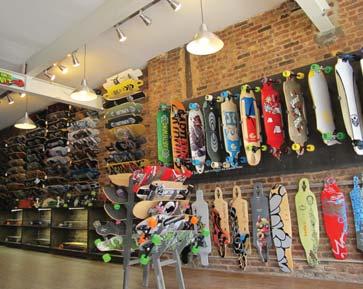


newest and best decks and components from all of our friends across the industry.

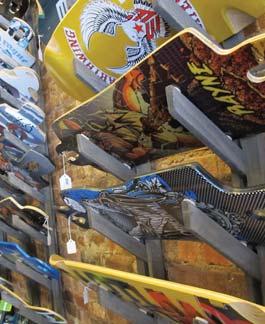
I like that in the former Brooklyn shop you could actually see the boards being put together. Any comments about that? What do customers say?

Yeah, the original Longboard Loft in Brooklyn was in the same space as the Bustin Boards shipping department, so you could watch dozens of boards – including your own – be assembled all day on the other side of a Plexiglas wall. But when Longboard Loft was broken out into its own entity, we tried hard to preserve as much of that spirit as we could in the new shop; we still sell a majority of “deck onlys” and build them out with custom setups in the shop. Our building stations are right at the register area and we encourage customers to watch their boards being assembled. It can be an educational experience for them as well, and it’s important to teach firsttimers how to tune up their assemblies and watch for developing problems. For many customers, especially parents, this is a highlight of their visit. People just aren’t accustomed to seeing things built in a retail environment like that, and it gives them an even greater sense of pride about their new purchase.
The last few years have been a crazy ride, to be sure … and it’s only just getting started! But the things that stand out for me this past year were the Longboard Expo in March (which was held at the site of the Longboard Loft store in Manhattan before we opened it) and the 2011 Broadway Bomb in October. To me, the first one had the feeling of a coming-out party for the New York longboard scene. So much of the North American longboard culture has been
West Coast-driven, and that event was the first time that all of these companies and riders were in New York together and got to experience what the NYC scene is all about. The 2011 Broadway Bomb only grew on that, and to have 1,000 people show up to skate together, including some of the world’s top riders in several disciplines, was huge for the growth of the sport in our region and was great exposure for the store. We look forward to and hope to support the growth of more events on the East Coast.
Wow … I guess everything and nothing, ha! It’s tough; we’ve definitely made some missteps along the way, but I think we’ve learned from them and we wouldn’t know what we do now if we hadn’t made them. So, I’m not sure what we would do differently with the benefit of hindsight.

I think it was impossible for anyone to see two years ago how enormous and complex the product offerings would need to be in a core longboard shop. It’s an incredibly technical thing on one end of the spectrum, and trying to keep up with every new innovation and product that hits the market to keep those technical riders stoked is a challenge. I think definitely one of the biggest challenges going forward is going to be

sorting through everything that is coming out and understanding what is most important and where to focus our inventory dollars. We are quickly seeing exponential growth from hundreds of SKUs to thousands of SKUs. It’s already tough to manage, and I don’t see a slowdown in new ideas and products coming anytime soon. We’re going to have to be selective.
What do you look for when it comes to staffing the shops?
Staffing is a challenging job. It’s important to find staff members with a mix of technical knowledge and an outgoing, customer service-oriented personality. We build a lot of custom setups and sell a lot of small components (bushings!) that require a fairly advanced understanding of a wide range of products and how they function … and
how they function together. So we definitely try to hire people who have extensive experience both riding and tinkering with their own setups. You’re never going to be able to answer every technical question perfectly, but we need to make sure we are making recommendations that will make our customers’ boards both safe and fun to ride. At the same time, a lot of our customers are new to the sport, so we want our staff to be as helpful as possible and create a welcoming environment for beginners and families. Those two traits, as you can imagine, don’t always go together. But fortunately we’ve got a very large pool of talent from which to pull.
Any final comments?
It’s been an incredible experience so far. The Manhattan store is coming up on its first anniversary this year but it already seems like it’s been there forever. We’re not sleeping, though; we’ll be making some improvements this spring and opening up some additional floor space to merchandise to allow for new boards, more apparel and expanded protective gear offerings. We’re also trying to continue to expand our assortment of high-end components and specialty hardware; we want to be the store where you can find the item you can’t find anywhere else. It’s a challenge, but a continually inspiring one. AXS
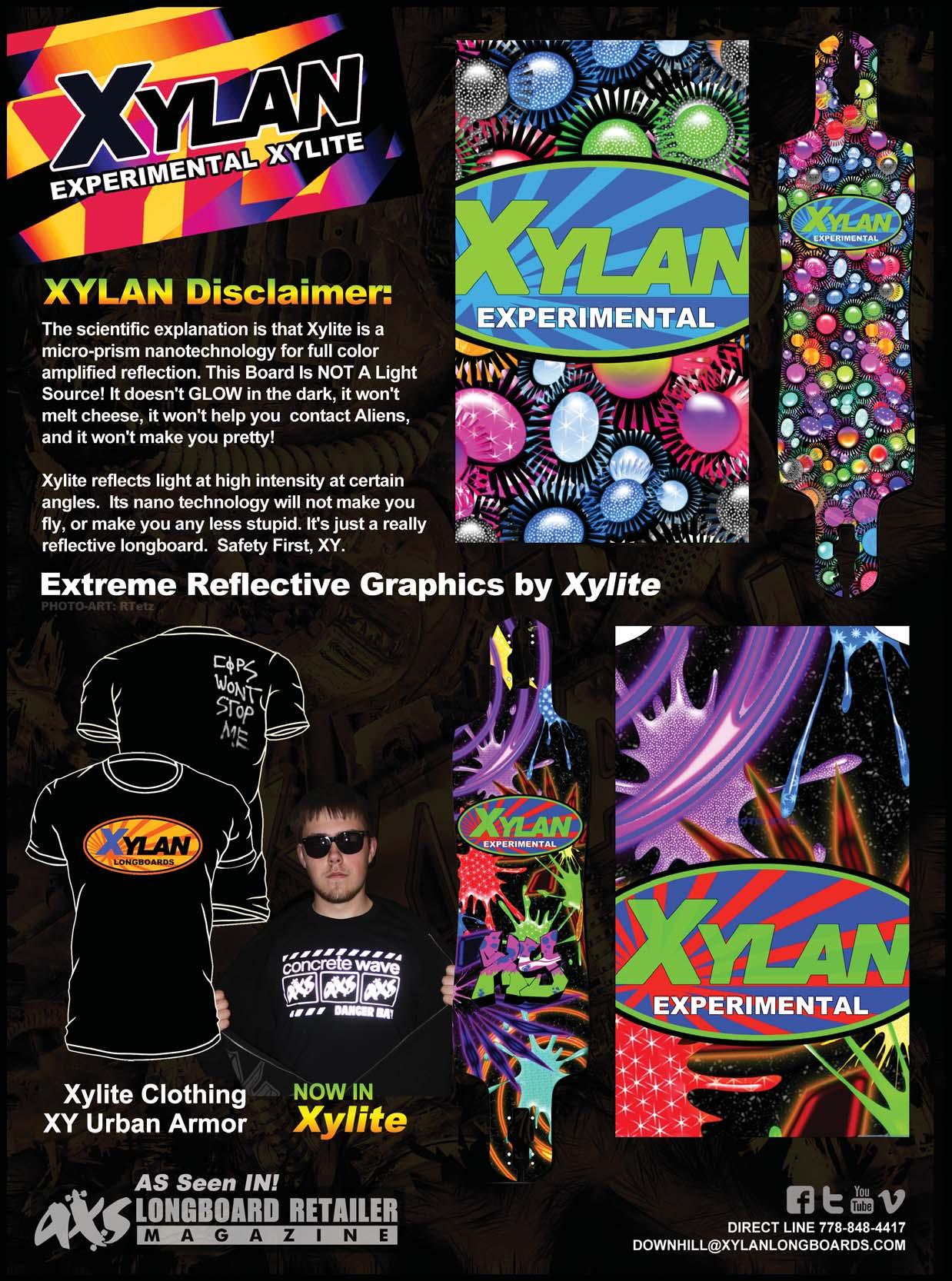
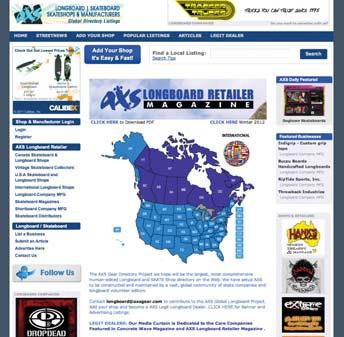
AXSGear.com is your one-stop shop for all things skateboard. We are a worldwide directory for all skate shops and manufacturers as well as a place to get all the latest skate news from around the world. Our printed publication aims to arm retail sales associates and business owners with the tools and information they need to succeed in an evergrowing and evolving longboard market. As with our sister publication, Concrete Wave magazine, “Search | Spark | Stoke” says it all. With AXS it’s as simple as searching your city name or state to see every skate shop in your area; a spark of interest and growing stoke are sure to ensue. AXS really benefits the smaller shops that don’t have the resources to do a full campaign on the Net. It gives them a place that is SEO’d (Search Engine Optimized) so they can compete in an increasingly online business market.
We blog daily to keep our community informed of events as well as important news about our sport. Our mission is to spread stoke and to keep our community informed. With hundreds of shops and manufacturers able to write their own content on AXS, we have an amazingly broad spectrum of longboard content updated continuously.
AXSGear.com is really two separate beasts: On one hand you’ve got our directory, which is a listing of all things skate, including worldwide manufacturer listings, shop listings and collector listings. On the other hand you’ve got our blog, which aims to keep the world up to date on longboard/skate news from every corner of the globe. We believe that the more information skaters have about our community, the more they’ll want to be involved.
Once you’ve claimed or added your listing, you’ll be able to write articles directly on our site. This not only helps us stay up to date, it helps your customers understand a little more about your company as well as helping them to feel more connected.
Unfortunately, we regularly see a lot of companies making the same type of marketing mistakes. The biggest mistake we see is a lack of contact information on company websites, i.e. address, phone number and email address. Another frequent oversight is a lack of product photos. It’s really hard to know if you want to buy a company’s product when it’s almost impossible to get decent photos or proper product information. It’s
equally hard to find a skate shop that refuses to list its physical address; if you don’t want people to know where you’re located, you probably shouldn’t have opened a retail operation.
We are always super-stoked when someone takes the time to fill out their company listing properly, but it is frustrating how many people apparently don’t read the instructions; so when filling out your profile, please read the instructions carefully. When used properly, our site is a great place for companies to release new product information, as we are properly SEO’d.

Another common mistake on our site is not using the proper short code for a video on your profile. Often people will add a whole URL for the video (http://vimeo.com/37320670 for example), when all you need is the short code for that video (in this case, 37320670). All of the instructions are there; please take the time to read them. As always, though, if you are having trouble listing your company or claiming a link, you can email an administrator (Pat@AXSGear.com) and we will be happy to help however we can.
AXS was started by 1980 Canadian freestyle champ and former Team SIMS Canada member
Rick Tetz, who is still skating to this day. The majority of daily content is added by AXS Elite Reporter Patrick Montgomery. Patrick has been skating as long as he can remember and has been on a longboard every day for the past 15 years. Pat and Rick have been friends for the past 14 years or so, and Rick’s love of longboards is partially due to the contagious stoke that Pat emits when he talks about longboarding and how much it’s changed his life.
AXS is also looking for Elite reporters around the world to help keep up to date on local events and news. To apply to be an Elite reporter, please email a cover letter to Pat@AXSgear.com. Please be sure to include some information about yourself, including your age, how long you’ve been on a board and what disciplines you ride. AXS
Do list all of your contact information, including address and phone number. Without this info, your customers have very little chance of contacting you or coming into your store. If customers can’t contact you or find you, how can you expect to get business?
Do fill in the About Us section; it really helps foster a connection between you and your customers.
Do fill in all blanks (Twitter, MySpace, LinkedIn, YouTube, Facebook ) in your profile, as it helps your customers get to know you and connect.
Do have your own server for your company emails. Do you really want Google and other companies to have full access to your communications? And what if they’re down?
Don’t list all of the companies you carry, as they are already listed and represented on their own page.
Don’t try to add more than one listing for your company, as duplicate listings will be deleted.
Don’t send emails to AXS admins regarding sponsorship, as we are not a manufacturer.













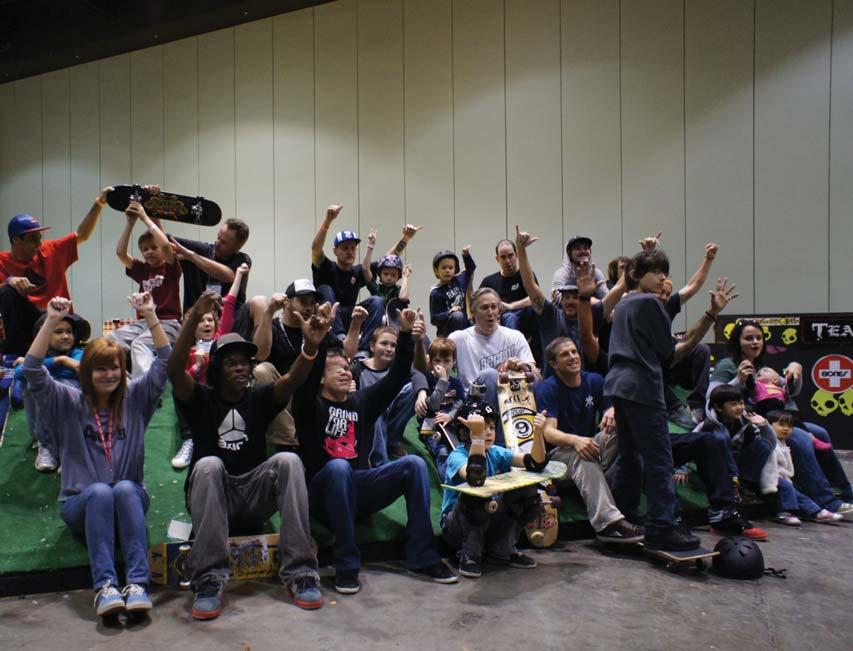
Concrete Wave and AXS Longboard Retailer Magazine were privileged to be at several events during the first quarter of 2012. First up was the Agenda Show held in Long Beach. It was much larger than previous years and was well attended – including a longboard area that was buzzing all . We decided to hold a launch party for AXS Magazine at Famous Dave’s BBQ. More than 150 industry folks showed up and were treated to a delicious lunch, complete with liquid refreshments. The event was held both inside and outside, and everyone agreed it was a great way to kick off the trade show season.

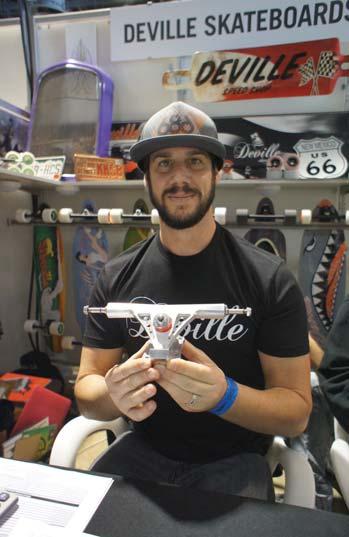




After Agenda, we headed down to Orlando, the home of Surf Expo. There were a number of longboard booths at the show, and everyone seemed to be in good spirits. The parties weren’t bad, either! Special thanks to Doog Becker of Surf Expo.

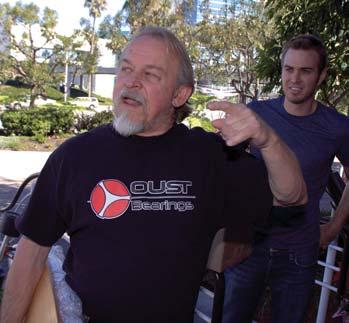



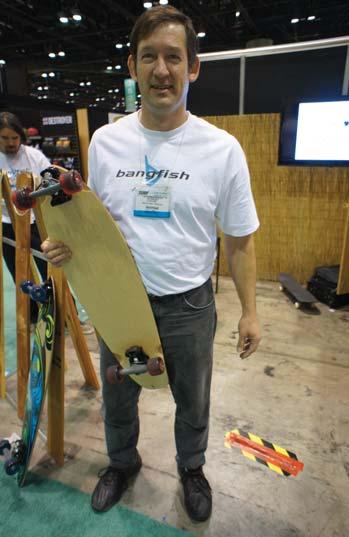






We were fortunate to be part of the SnowSports Industries America (SIA) trade show in Denver, Colorado. We gave away more than 1,500 magazines at our booth and met with dozens of retailers. One of the most impressive things we encountered was a snowboard/longboard simulator. You can read more about that in this issue.


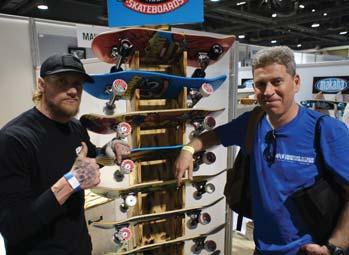
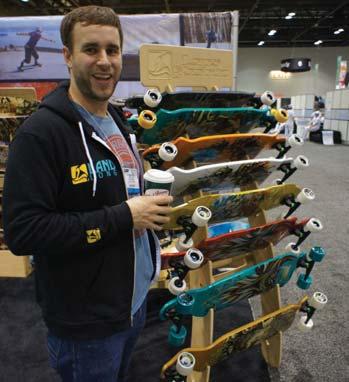




























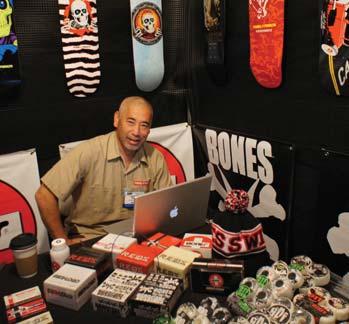

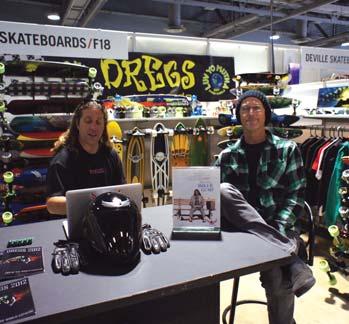
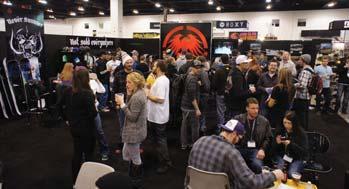


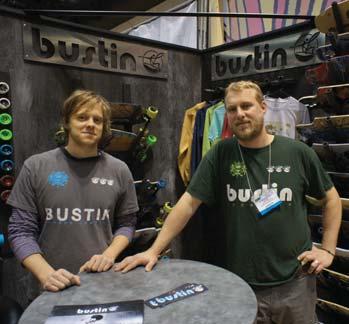



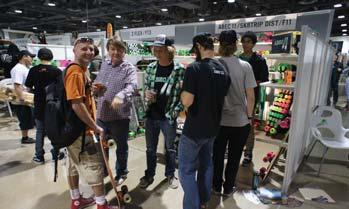

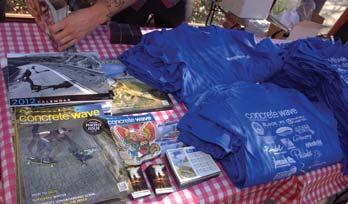
We also wound up at the Slate Show in Las Vegas (part of MAGIC). However, due to the rule that “what happens in Vegas stays in Vegas,” we don’t have any actual photos. The Slate show was a great success. A huge thanks to the folks at Slate and Board Retailers Association for hosting a really enjoyable evening at the Palms Hotel, followed up with a concert at House of Blues (featuring Lauryn Hill).
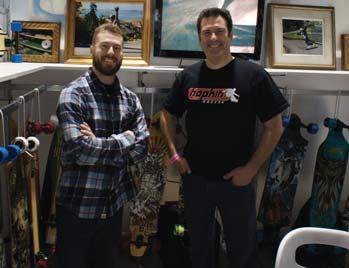
When every second counts, Bullet Ceramic Bearings are your key to speed. Our advanced silicon nitridebased ceramic balls are polished to a flawless, mirror black finish. Able to with stand super high heat and pressure, their awesome level of precision remains unaltered, mile after mile. Because they are unaffected by high heat, Bullet Ceramic Bearings are able to use less lubrication causing less friction so you go faster!
World class riders like Paul Kent and James Kelly count on Bullet Ceramic Bearings when they set their sights to win.
www.bulletlongboards.com



The relationship between skate reps and retailers is dynamic, reciprocal and rewarding. It’s dynamic because products are darting at us and buyers from every direction. Picking the right one requires a pretty accurate crystal ball and using it with Stephen Hawkinglike pinpoint accuracy. It’s reciprocal because we’re both involved with mutual goals (buy more, sell more). The reward extends beyond blowing out inventory or expanding to meet your growing demand. The real reward is the industry we work in, the products we ride and sell and the people we talk to and meet on a daily basis.
However, below this delicious beefy gravy I just spread over our sweet jobs are pockets of overly spiced mis-shipments or mistakes because of the rep or his company, or miscommunication between the rep and his retail contact. As a rep, I have to pass on bad news sometimes; or conversely, sometimes I receive the bad news. A buyer might call me and say, “I didn’t order this model as a deck because we only sell our longboards as completes.” When this happens, I have one big rule I adhere to: Follow a negative statement with positive actions. If you absolutely have to pass on bad news, always make your best effort to follow it with good news. Always. After verifying the rest of the order is on point, I might respond with, “I do see that you were invoiced for a complete. I can credit you back the price for the components, but can you hold onto that deck (the negative) until next order when I can ship you the components at a discount? If it sells as a deck (the positive), then you know there’s another way to bring in and
move this product.” It’s these positive actions that transcend business relationships, going beyond products that work and ones that don’t. It has a ripple effect that affects the people you work with.
It not about giving the perception that retailers are coming out on top, it’s really about actually turning a wrong into a right with the tools that you’re given. Simply shooting over a Return Authorization number isn’t always the answer. Also, I’ve never had a buyer ask for more than what he originally ordered as compensation.
I’m not trying to preach “The Secret” or be a motivational speaker. I never read the book, and I don’t lecture. I do know from experience that this works for me with retailers, and it works for retailers with their customers. Follow a negative with a positive and watch things flow a little easier around the shop: “I don’t have those trucks you were looking for, but I do have these trucks with a reversible hanger and higher-grade bushings. In my opinion this truck is more bang for your buck. That’s why I carry them!” It may sound like a kooky statement (be positive,
smile, etc.), but it works. It’s subliminally contagious.
If I have to bring bad news to the table, handling it quickly is the first priority. Avoiding or denying the “elephant in the room” is the worst step to take.

I think I can safely say that more than 75% percent of the actionsports demographic has an email or a cell phone with email capability. I believe that statistic is higher if you run a business. Use this tool as often as possible with your reps. Communicate, ask questions, and respond quickly with a rep you are ordering from. Make suggestions, because we are your direct contact with our boss. These are times to be creative, and just as you listen to your customers, we listen to you.
Having said this, if something is askew with an order, I want to know as soon as possible, not four months down the line. It makes it a little tougher when I have to go to battle. I’m on your side, period, and a shiny new sword is much cooler-looking than a rusted one.
When all is said and done, I have tremendous respect for shop owners and their buyers (along with the rest of their shop family). They have to pretty much predict the future –what’s hot and what’s not, what will be hot and what willnot. They make most of their decisions based on experience and listening to their customers. When I say that a rep’s relationship to a retailer is dynamic, reciprocal and rewarding ... it is, and much more. We have a lot of products, and they have even more choices. As we bounce ideas back and forth and solve problems together, we stay progressive and roll over complacency. AXS
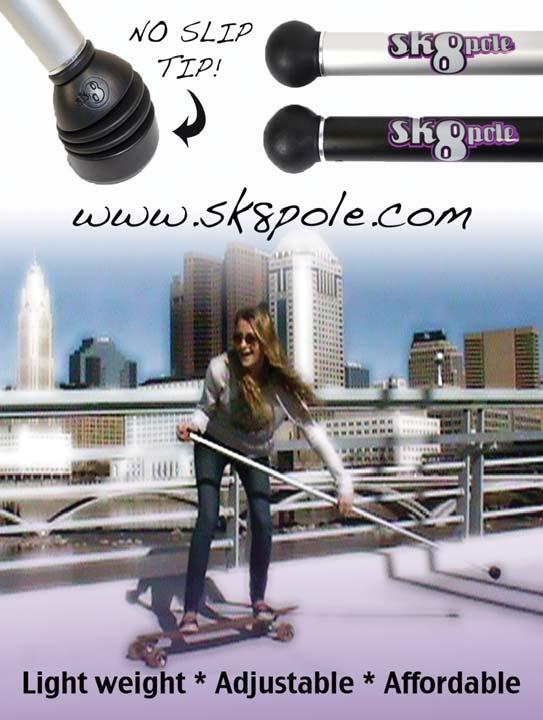
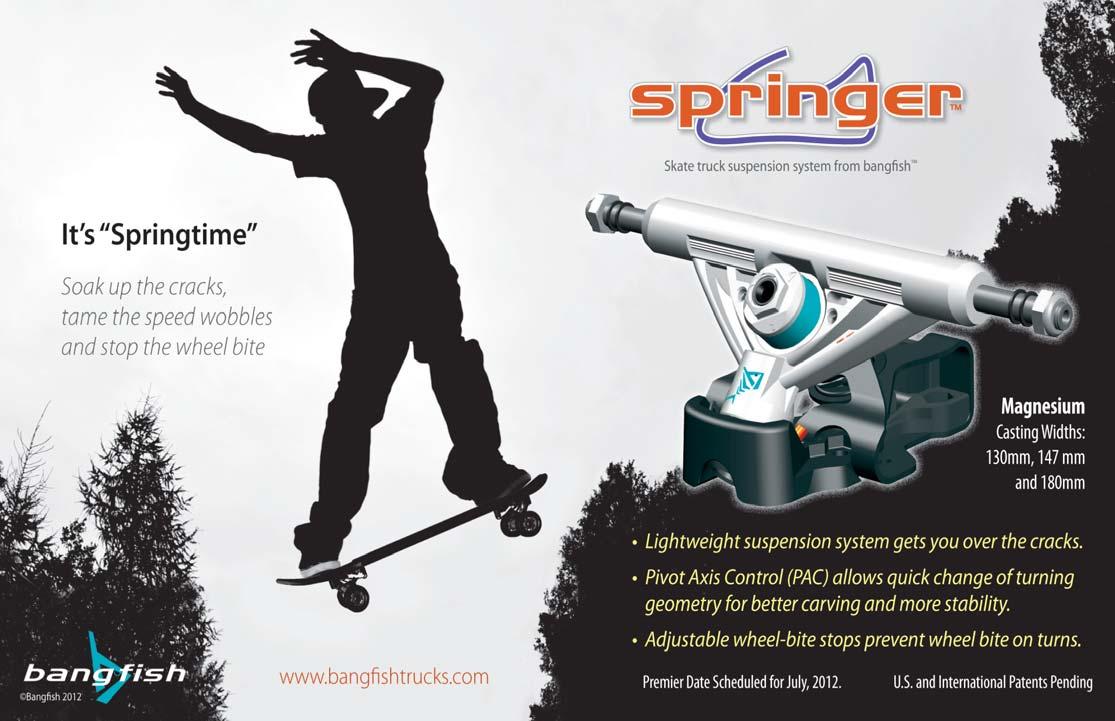
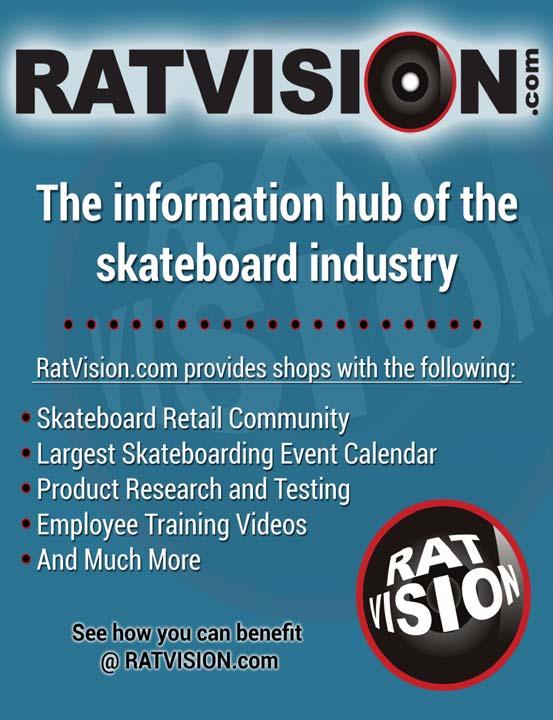
“Are you a Warrior or a Slave?” This is the question you should be asking yourself. Are you doing something you love and that gives you freedom and true enjoyment? The majority of the working class can’t even begin to imagine how it would feel to have the freedom to do what they love and at the same time get handsomely rewarded for doing it. The feeling of being stifled with added stress and saturated with risk factors is often accepted by the ritual rhythm of the working class, because the road of least resistance is the path that most people will chose, never considering what would happen if they took a chance and grasped control of their own future.
When you consider the amount of risk we encounter every day as employees, employed by an employer, repeating the same action on a daily basis is nothing short of gambling away your own future. As a white-collar or blue-collar worker, you’re subject to having others decide your fate or job advancement, and the stress/fear of being terminated without benefits – especially as we get older. We wonder, will I be replaced by a younger man or woman who is willing to do the same job for lower wages? Or we experience a constant fear of being restrained by someone who may or may not be as qualified as we are but is telling us what to do. Most people can’t even process the risk factors that exist. They’ve never stepped out of their comfort zone and examined the realm of the possibilities, of taking a chance and choosing to take responsibility for their own lives and what that could bring them.
Entrepreneurs have made a conscious decision to be in control of their fate, to do something they love and have the freedom to grow by choosing to take responsibility for their own lives. Understanding the relationship between risk and reward is very important. There is a fine line that separates us from becoming an entrepreneur, engaging/encountering the fear of survival by taking action. Having to depend on one’s own efforts for revenues, i.e. … can I really do it? You’ll ask yourself over and over. The answer to that is, if there is a will to succeed then you’ll find a way. You have to want it more than anything else you’ve ever wanted. And you have to keep your head in the game by staying focused on your goals and having an ongoing plan of action that keeps your business moving forward in the right direction.
All entrepreneurs want to maximize their potential efforts for maximum success and

minimize their failures that constitute a return on their time in the form of remuneration. Risk versus reward isn’t what a true entrepreneur is thinking about. The entrepreneur knows that there will always be risks. But when choosing risks, there comes the potential for greater profits and rewards in life that increase exponentially. For the entrepreneur it’s the chase, adventure, challenge, excitement, creativity – the passion he (or she) possesses and wants to share with the world. This empowers him as a true entrepreneur with a mental attitude that his ultimate destination is obtainable and has a level of credence that is no less than a force to be reckoned with.
How does one make the decision to become an entrepreneur? It’s not something you decide to do one morning while drinking your coffee. I’m talking about a spontaneous internal combustion that suddenly you are compelled to make a choice to be in control of your own fate and learn from your mistakes. It’s like a burning trait of resoluteness, undiscouraged, undeterred, recklessly determined and filled with passion about the one thing that you believe and desire and want in your entire life. If you truly desire to succeed, you will allow no one to eradicate your dreams or stop you from obtaining your ultimate goal. So you see … it’s a decision that has been cultivating within you all along, and at the right moment you reserve a time for you to be the master of your ship. Suddenly, you realize you’re at a specific time and place (a favorable or even unfavorable combination of circumstances that have occurred), which often acts as a catalyst that causes an internal spark that ignites an emotional reaction, causing an uncontrollable explosion within you to move forward. One might call it a “burning desire” to succeed at what you are passionate about no matter the risk.
Your destination is no less than the ultimate goal for which something is done by your own choosing. Let’s examine just exactly what this means to a typical business owner in a little shop or the typical business owner of a larger shop who is a fledgling entrepreneur.
Choosing what type of business you want to be in is like selecting the make and model of a vehicle to climb into to reach that final destination really doesn’t matter … because when you compare the idea to the experience, it’s like shopping for a new or used vehicle. That vehicle serves as nothing more and nothing less than a vessel to help reach your destination.
It will always come down to the kind of man or woman who’s in the driver’s seat of that vehicle. The choices you make and how you drive and maneuver that vehicle will ultimately determine your destination.
Let’s talk about that “ultimate destination/goal,” keeping in mind that there are a few rules you should know before you venture into the unique, solitary world of the entrepreneur. First, you have joined an elite group of individuals. The majority of people, friends and family members will sit back and watch, finding many reasons why you shouldn’t venture into uncharted territory; in fact, you may find that some of your best friends not only try to discourage you but actually root for you to fail because they don’t have the courage to take responsibility for their own lives.
Failure is possible, likely, and can be expected. However, how do you expect to learn anything on a daily basis if you can’t observe your own failures? Let’s look at the word failure. It’s defined as an event that does not accomplish its intended purpose. So what! So the entrepreneur must realize that there is more than one way to solve a problem. So I will say it again: If you never take a chance and fail, how will you learn? So if you have fallen seven times, you’ll get up an eighth time. You will observe your mistake and know how to play the game better in that exact moment. There’s no hidden secret here. There will always be a way to get over onto the other side of that fence, no matter how high one must climb. It comes down to doing what others are not willing to do. In most cases you’ll find very little competition, and therefore you mustn’t stop before you get started.
Taking action is a prerequisite, something required in advance if you’re going to become a member of the elite club of entrepreneurs. Always be willing to do what others won’t do to succeed –remembering that one key element to succeeding is not repeating the same mistakes over and over. Learn to play the game of life to your advantage by observing each and every mistake you have made. Don’t repeat and rewind the last failed attempt and think you’re going to get a different result, because that is the definition of insanity. If something doesn’t work, find a different way to play that particular situation; keep it moving forward and observe your mistakes. From the “department of redundancy department”: Always remember, “Don’t Rewind – Just Push Play!” AXS
Not long ago there was only a handful of companies manufacturing good quality bushings, fewer still making tall or soft ones. People were regularly cutting wheels up to get at the high-rebound ’thane. Now, it seems, we’re spoiled for choice.
Bushings are crucial to the way our trucks behave. They can, and frequently do, make more of a difference in a truck’s behavior than the typically minor geometric differences between most trucks. Now, I’m not saying we should all instantly replace the bushings a truck comes with. But I am saying that when a company manufactures a truck, it is forced to make a guess. Even if it makes a well-educated one, it’s still an assumption about what sort of board the truck will end up on, how much the person who ends up using it weighs and what they actually want the board to do. If those assumptions match you and how you ride, great. Still, understanding more about the variety of bushings out there will help you get the board to do what you want it to do.
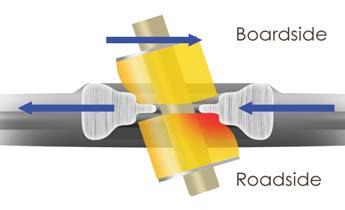
Let’s start with the four classic shapes: Cone, hourglass, barrel and stepped.
The cone offers the most linear response of these bushing shapes. This can either allow lots of lean, or it can allow you to use a hard, light bushing and still be able to make it turn.
The hourglass also offers quite a flat curve; it “progresses” more than a cone because the top can’t distort as much.
The barrel has a fairly evenly progressive curve. Many riders like it because of its predictable increase in resistance.
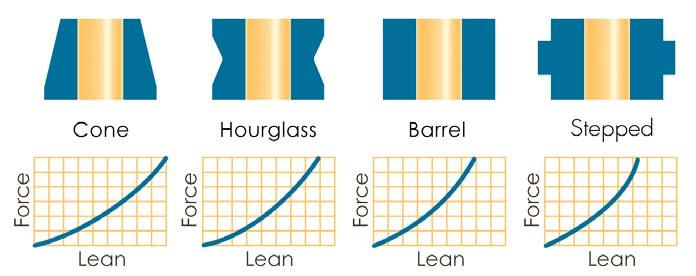
And the stepped family (sometimes generically called “Stims,” after the legendary Tracker Stimulator bushings first introduced about 20 years ago) often have a spike of resistance when the extra ring of ’thane engages.
What’s interesting is we’re beginning to see bushings that are a cross between the two ends of the spectrum; they may provide better initial resistance or “center feel” than a barrel, but lean more like a conical. There’s a pile of shapes that haven’t been commercially offered yet, so try cutting your own. For example, I wonder if you could make a bushing that spikes in resistance at a specific lean angle ... Anyhow ...
So far I’ve talked mostly about lean feel. This is not all that bushings do. They also constrain the hanger’s motion to the truck’s pivot axis, or at least they try to. This is particularly
noticeable and important under side load. Try this test: Grab your board, hold it steady, and push on one wheel toward the other wheel, parallel with the axle. With a softish bushing you can actually see the hanger move sideways without pushing all that hard. This happens when you ride, and it affects how a truck feels. When you take a board with soft bushings and turn it hard, this side-load distortion tries to “pull” some turn out of the trucks, and it does so in a way that’s relative to how much force is being applied sideways, i.e. how hard you’re turning.
This side-load is resisted primarily by the roadside bushing, shown here in red. The hanger is driving left due to the wheel’s grip. The board, baseplate and kingpin are effectively driving right, due to the rider’s momentum. Because this bushing is under compression already it does a pretty good job. But it does illustrate that both bushings and seats have a slightly different role to play depending on whether they’re roadside or boardside.
This also affects how the different shapes and duros behave. I’ll note here that some trucks – I like to call their family “twin-fixed” – have a mechanism that stops all side-motion. These trucks have a very direct and responsive feel, which some riders prefer for certain types of riding.
I’m going to start this section with the “wheellift test.” This is a simple way of testing that either your trucks are tuned the same or that you’ve got a split-axis board set up evenly. Put your board somewhere hard and flat. Place one foot on a rail, halfway between the nose and tail. Push downwards, and watch the wheels on the outside of the turn. Eventually one or both wheels will lift off the ground. Loosen/soften the truck whose wheel lifts first and/or tighten the one that stays on the ground.
Getting this right can help all sorts of things. Riding switch is a good example; traction and wear consistency are often others. But it also helps you tune boards that have a very different truck setup on one end compared to the other. Now, I’m not going to say that this is an ironclad rule; that would be stupid. Plenty of us like and thrive on a tail harder than the nose, for example. But it’s a good place to start.
I’m sure many of you are probably wondering which duro and shape to pick. Unfortunately, without further details, this is unanswerable. So find out what you can about what you’re riding now. From this knowledge you can have a good guess at how another bushing will behave. If you want more lean, pick a softer duro or a different shape, or perhaps even modify what you have a bit. If you want less lean, go harder, or pick a different shape.
It’s better to run a soft bushing a little tight than a hard bushing too loose. This provides good pre-load, center feel and lean depth. The pre-load keeps the boardside seat engaged under turn; center feel gives higher stability; and lean depth lets you turn well. Too hard plus too loose gives you “flop and stop” — bad center feel, then bad turning.
I’ve run out of room — so experiment, people. Try a few different duros, shapes and ’thanes, and decide what you want through experience. There’s no substitute for experience. AXS
There is no doubt that the longboard market is creating some truly revolutionary products. From specialized carbon fiber decks to grippy yet fast wheels and sophisticated truck designs, retailers and consumers are constantly hit with new ideas. Some products are instant sensations while others fizzle and vanish into obscurity. In the case of Xylan Longboards, it has taken quite a considerable effort to bring their ideas to fruition. But now things are rolling and people are stopping in their tracks, stunned at what Xylan has brought to the table.
Longtime British Columbia skater Rick Tetz started Xylan Longboards in 2011 as a way to showcase some of the local longboard talent in BC. Pat Montgomery soon came on board as head of sales and team captain. Pat had introduced Rick to longboards when they met 13 years ago. “I was instantly hooked on long-distance pushing, which was much easier on my spine,” Rick says.
They decided to test their first prototype at the 2011 Attack of Danger Bay race. Pat received his prototype Guillotine deck hours before his first World Cup race, which he survived and enjoyed greatly. The response to the Xylan deck was

amazing, so the two decided to go forward and promote Xylan Longboards full blast at the AXS/Concrete Wave Longboard Trade Show. “The feedback was excellent, and I knew that we were onto something,” Rick says. The company now produces six different models that run the gamut from speedboard to freeride to cruiser.
So what exactly has Xylan created? The company is the first to use a material called Xylite, a microprism nanotechnology for full-color amplified reflection. In layman’s terms, this means that Xylite is super-reflective, Rick says – beyond any kind of “glow-in-the-dark” or reflective tape that people have seen before. When Xylite is hit with light, graphics and even photos literally light up to an extraordinary brightness.
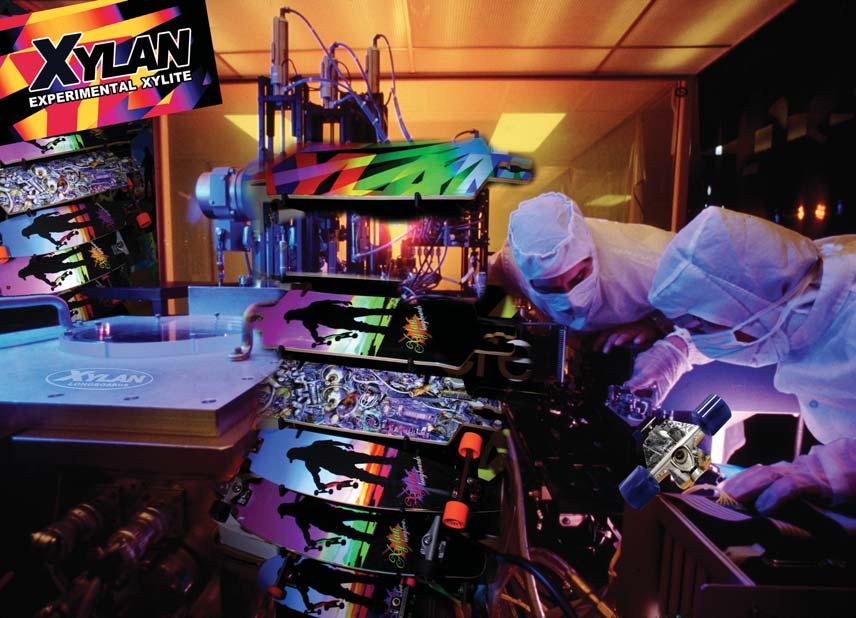
Rick is an Internet fiend and is constantly scouring the Web for new ideas. So when he ran across the Xylite technology, which was developed in South Korea, he quickly realized it could be used on longboards in ways that would both enhance their appearance and increase their safety. “I have always been interested in unique products, and there was something about Xylite that really stuck out,” he says.
Xylite works by actually amplifying light from
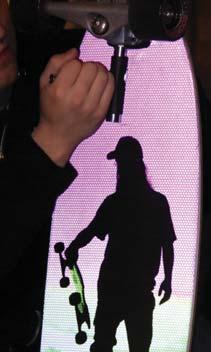
any ambient light source and reflecting it in full color, Rick says. To give you a sense of just how powerfully reflective Xylite is, Xylan boards look like they’re filled with LEDs, even though they only reflect the surrounding light. When photographed from a block away the Xylite is actually brighter than the surrounding street lights, Rick says.
Where Xylite truly shines, both literally and figuratively, is when riding at dusk or after dark, when safety is of prime concern. Although there is no light reflecting on the bottom of the board while actually riding a Xylan longboard, riders can use their Xylan board as an indicator that fellow longboarders are in the area. “In our experiments with longboards, we’ve had Pat actually stand with his Xylan board by the side of the road,” says Rick. “It becomes an incredible beacon that quickly and effectively alerts drivers in the area. It is truly reflective tape on steroids!”
Currently Xylite is only available on Xylan Longboards. Rick says he has plans to use the material in other ways, but he was not forthcoming with any details. I pressed further, then was reminded that Rick is an expert in martial arts. “I’d love to tell you,” he said, “but then I’d have to kill you.” AXS
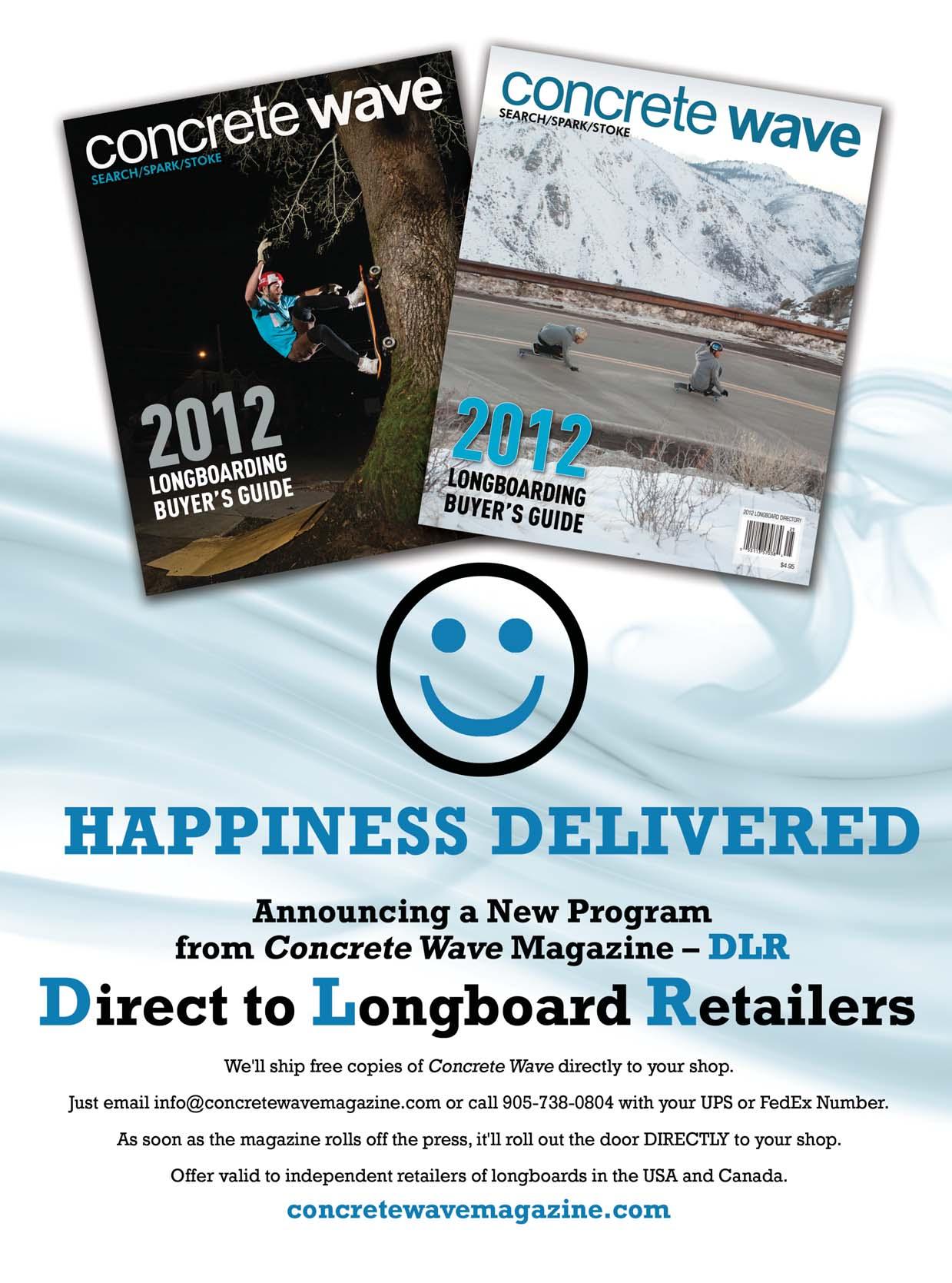
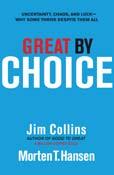
Several years ago, Collins’ highly influential book “Good to Great” led numerous companies to adopt what he called the “Hedgehog Concept” – identifying one key concept that you are passionate about and can be the best at, and finding what drives your economic engine. This new book, based on nine years of research, uncovers why some companies thrive in uncertainty, even chaos, and others do not. It’s a compelling read, and I regard it as an invaluable new addition to my collection of business books. Among the key highlights:
•The best leaders were not more risk-taking, more visionary and more creative than the comparisons; they were more disciplined, more empirical and more paranoid.
•Innovation by itself turns out not to be the trump card in a chaotic and uncertain world; more important is the ability to scale innovation, to blend creativity with discipline.
•Following the belief that leading in a “fast world” always requires “fast decisions” and “fast action” is a good way to get killed.
•The great companies changed less in reaction to a radically changing world than the comparison companies.
While some of these ideas may sound counterintuitive, Collins and co-author Morten Hansen provide solid evidence and detailed anecdotes to back up their claims. The discussion on how Apple got its mojo, lost it and eventually regained it proves that focus is crucial.
Sure, it’s an uncertain world and you can’t predict with certainty how things will turn out, but this book provides readers with insights how companies can make strong decisions in chaotic times.
 By Peter Sims
By Peter Sims
This small, yet surprisingly powerful book might be just the ticket for those worrying about how to grow their business without blowing the budget. The premise is pretty simple: Rather than bet big, keep testing with a series of smaller steps. As Sims explains, “at the core of this experimental approach, little bets are concrete actions taken to discover, test, and develop ideas that are achievable and affordable. They begin as creative possibilities that get iterated and refined over time, and they are particularly valuable when trying to navigate amid uncertainty, create something new, or attend to open-ended problems.” It’s all about experimenting with small amounts of time and money and then learning from those experiments. So rather than blow the entire marketing budget on a brand new website or new light fixtures, test numerous waters first.
With the retail landscape and economy in such disarray, any advantage you can gain over the competition will be highly worthwhile. Business mistakes can be fatal. This book makes a strong case for being strategic, while keeping an eye on the cost of the tactics.
If you’ve ever wondered what triggers people to take out their wallets and become customers, this is an excellent book to pick up. There’s a lot of psychology laced throughout the book, but it’s breezy and easy to read. Many items combine to create demand, Slywotzky says. Some are obvious, like creating a product or service that has magnetism. Others, like dissecting the twists and turns that make up the purchase (a “hassle map”) require a little bit more insight. If you’re a retail shop, you’ll find the story about Wegman’s grocery chain riveting. They are simply obsessed with providing shoppers with an unbelievable experience. The discussion about Pret A Manger and their quest for the perfect sandwich is also very worthwhile reading. Slywotzky makes the case that creating demand needs to be well thought out. Research plays a very big role, along with a lot of hard work, and, yes, even some serendipity.

Very entertaining and informative examples about the dozens of vital things to consider when it comes to creating demand for your product or service. AXS
How much do you spend on skateboard hardgoods each year? How long have you been skateboarding?


